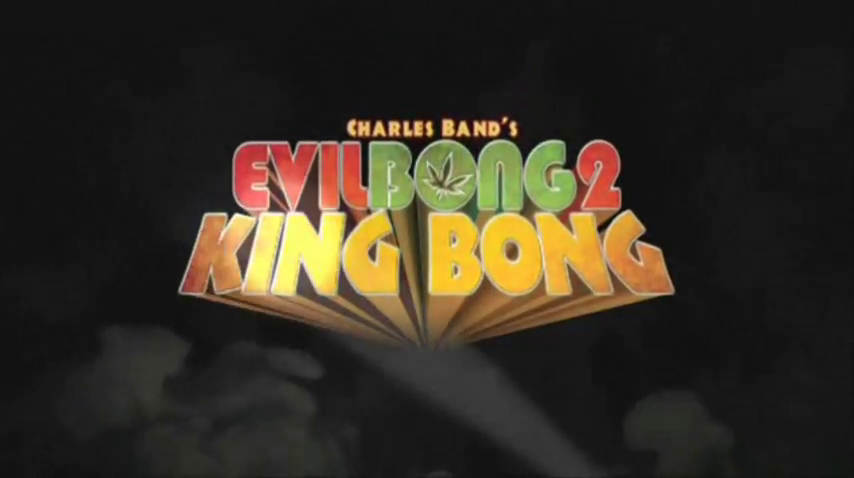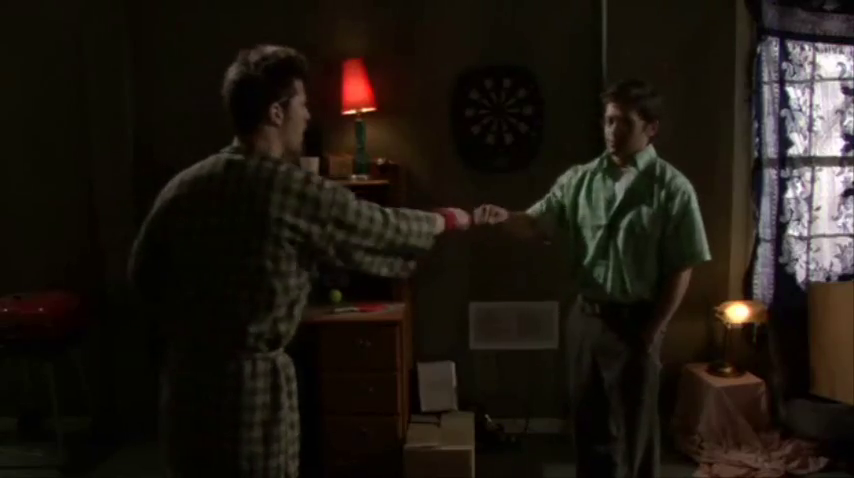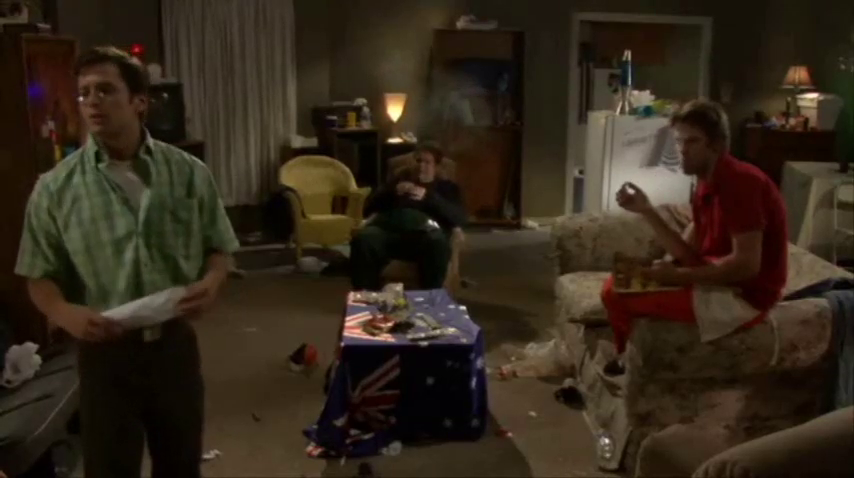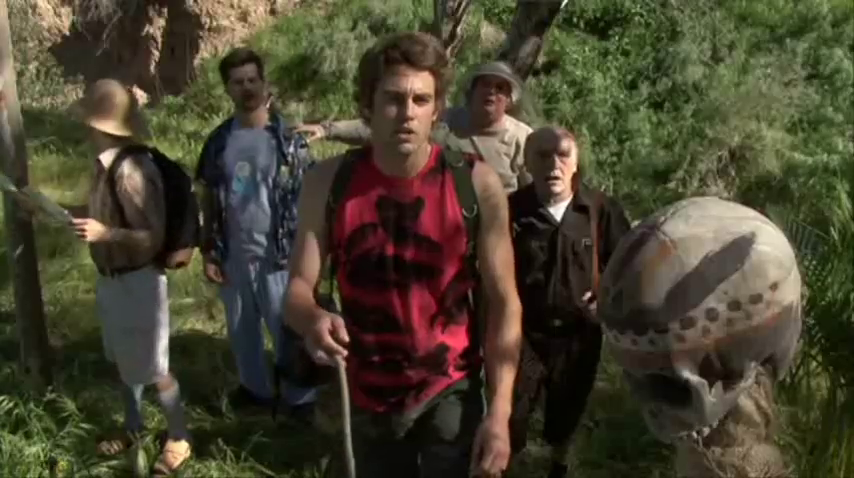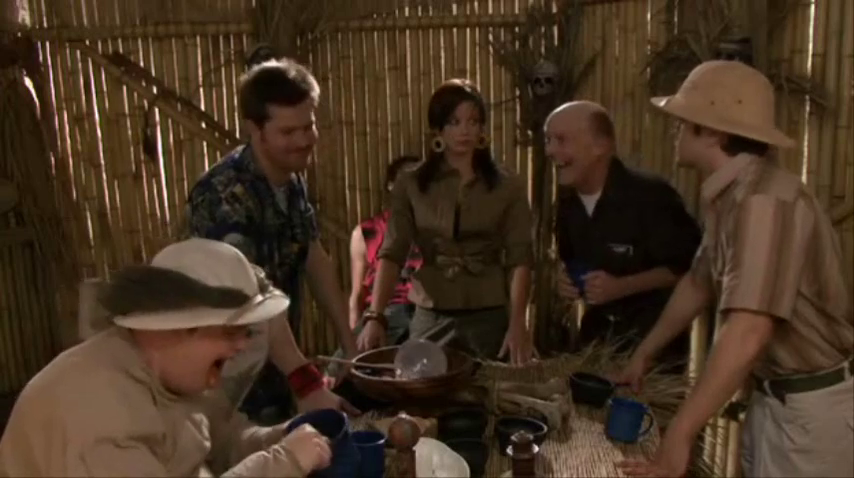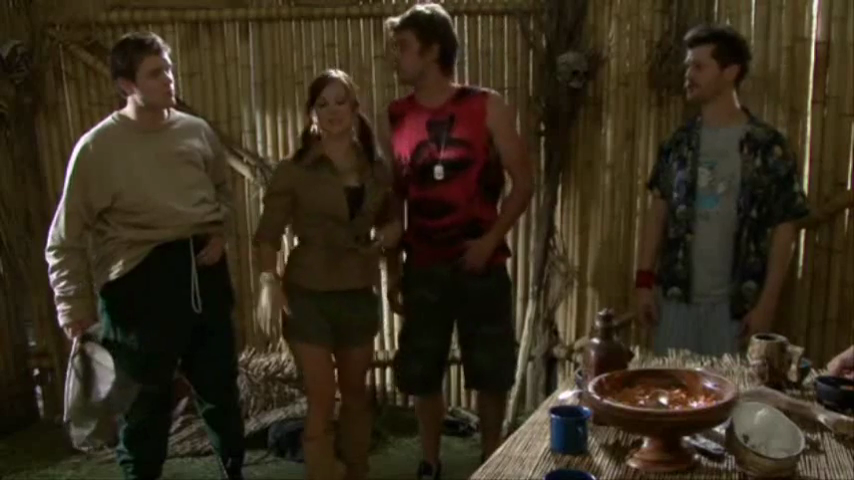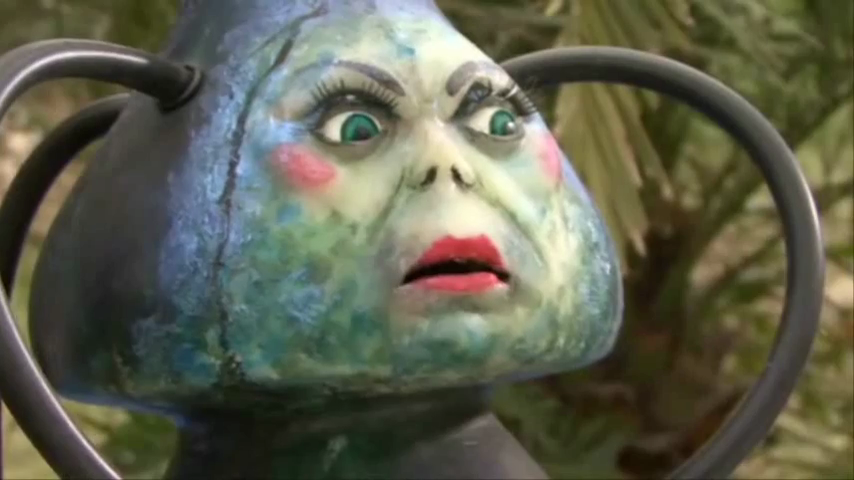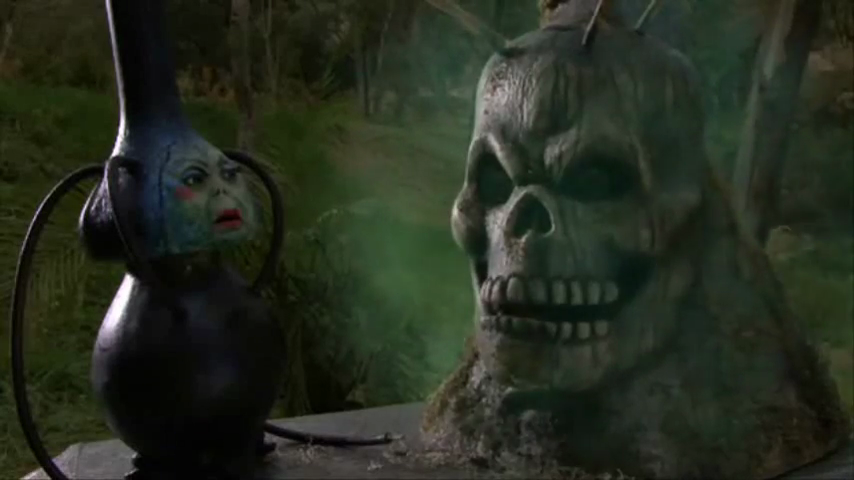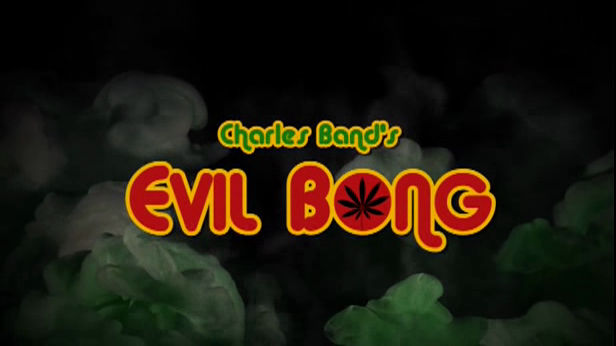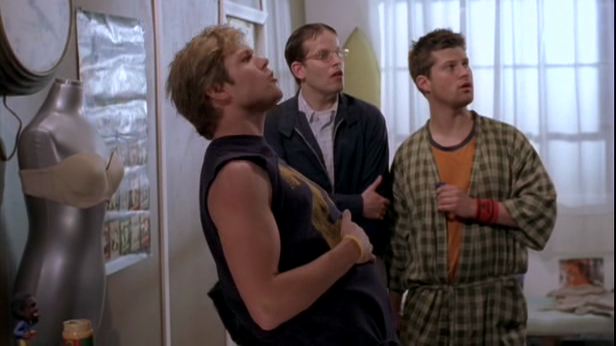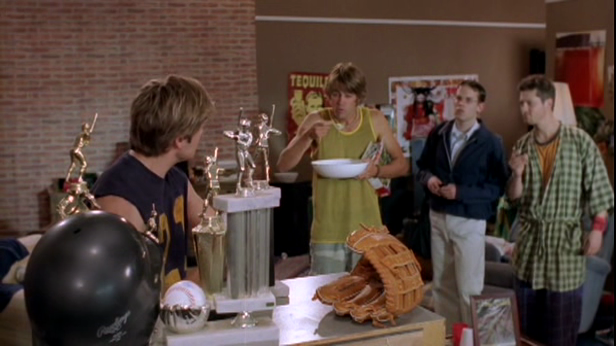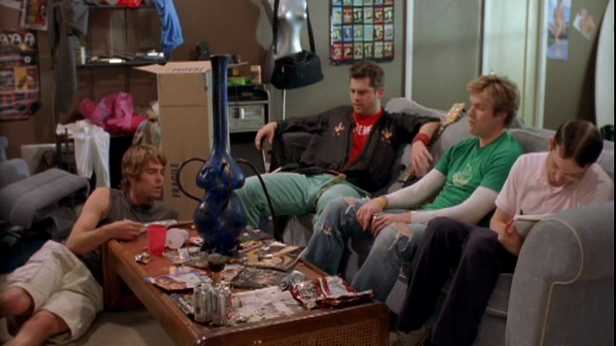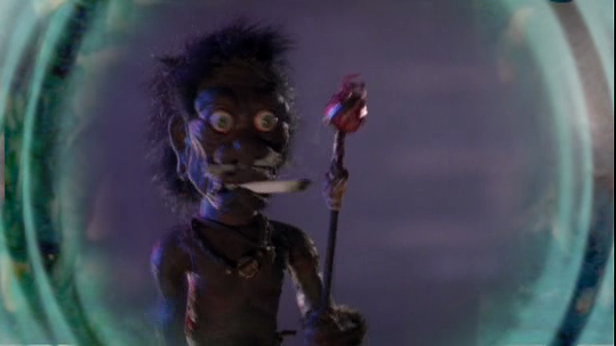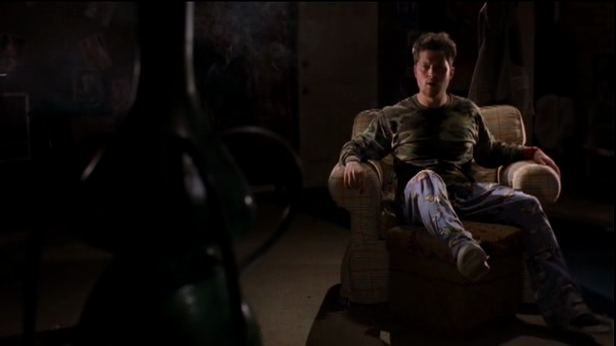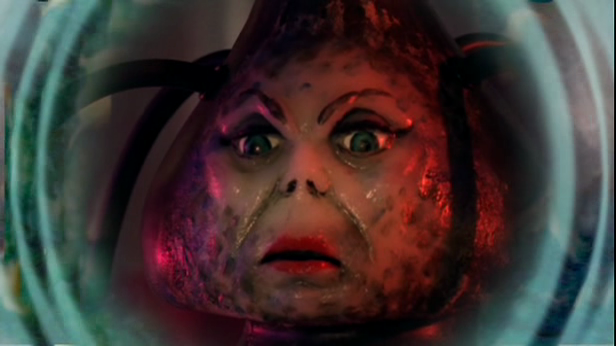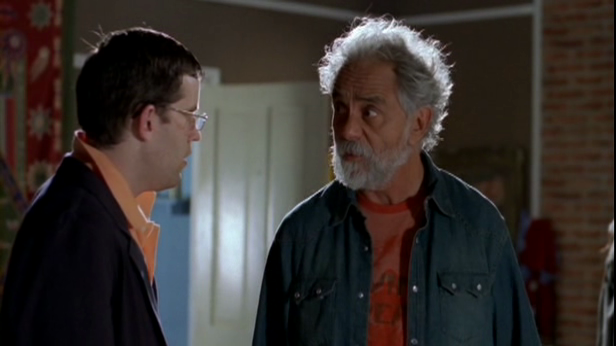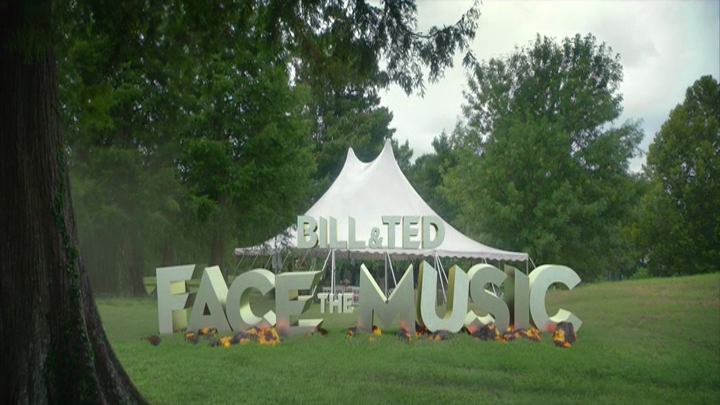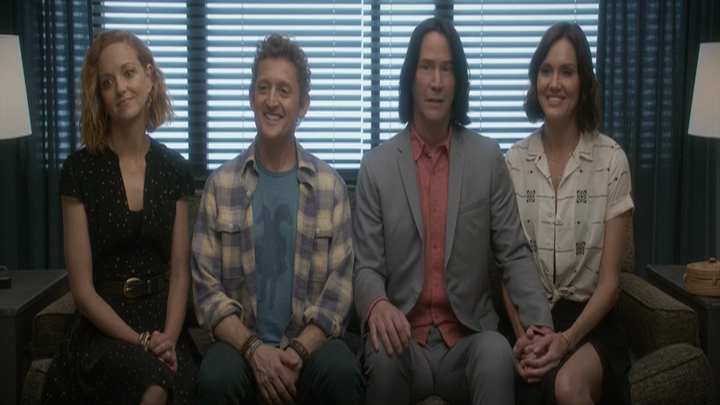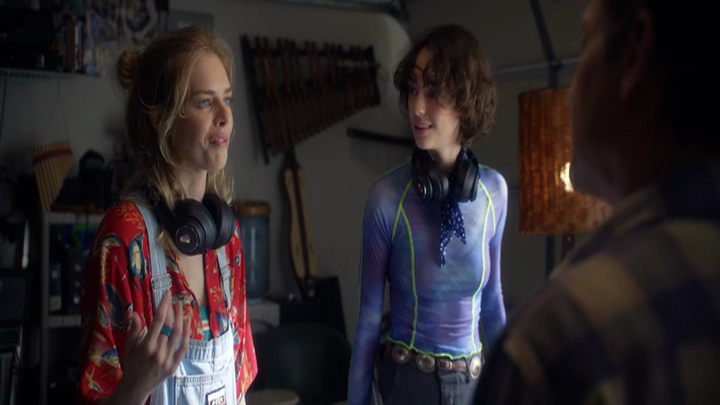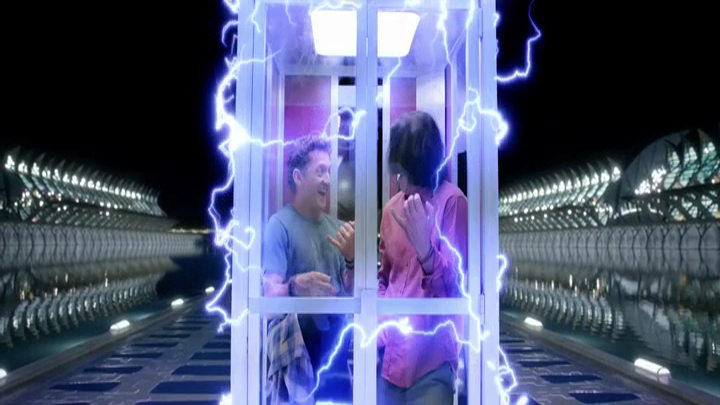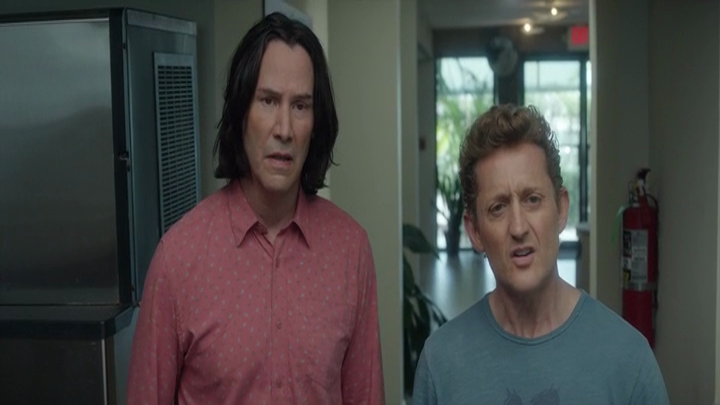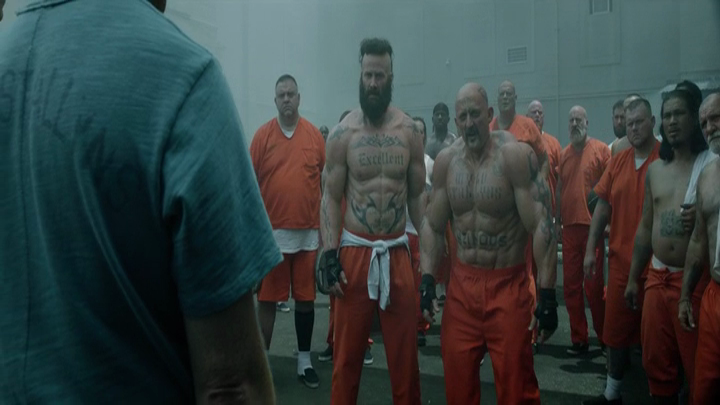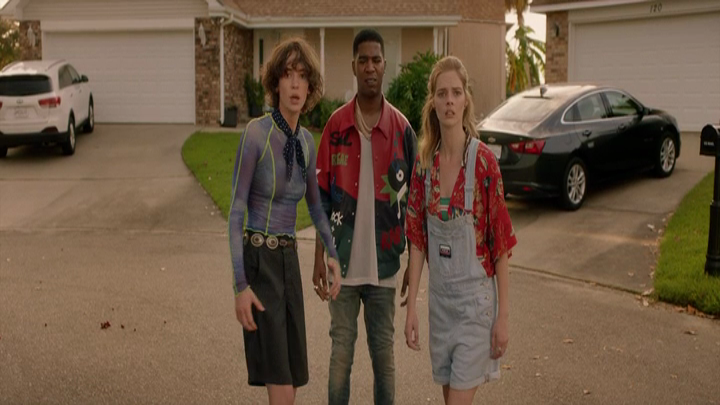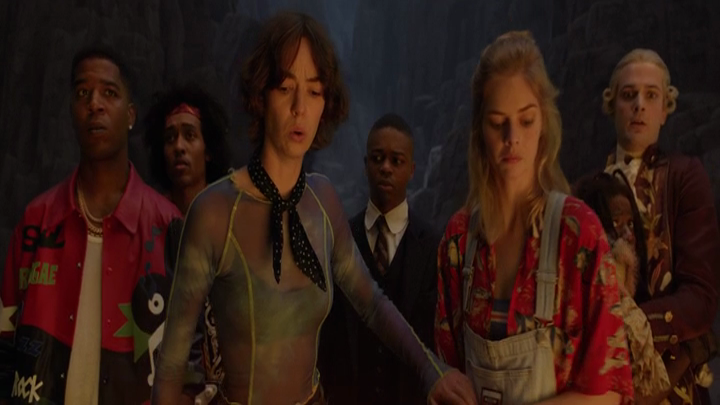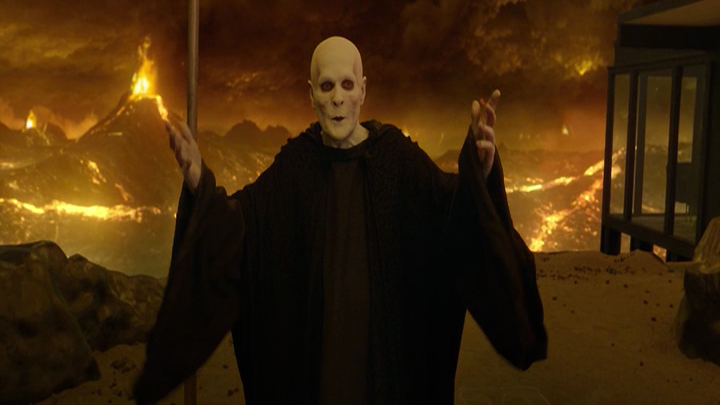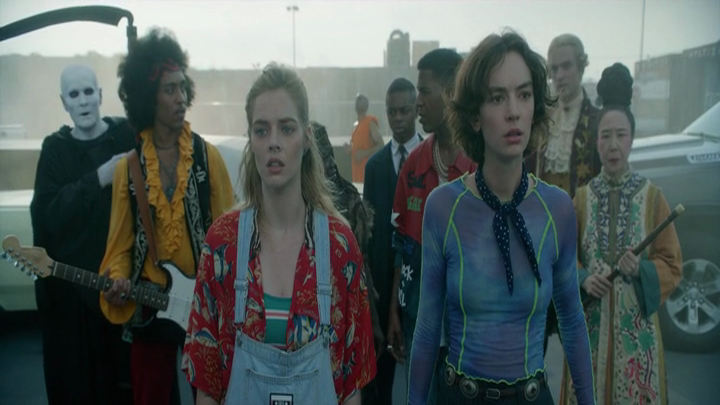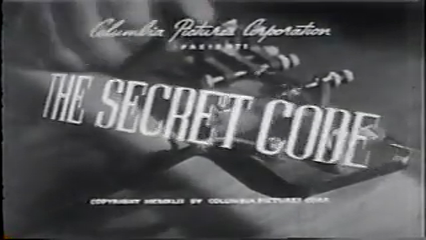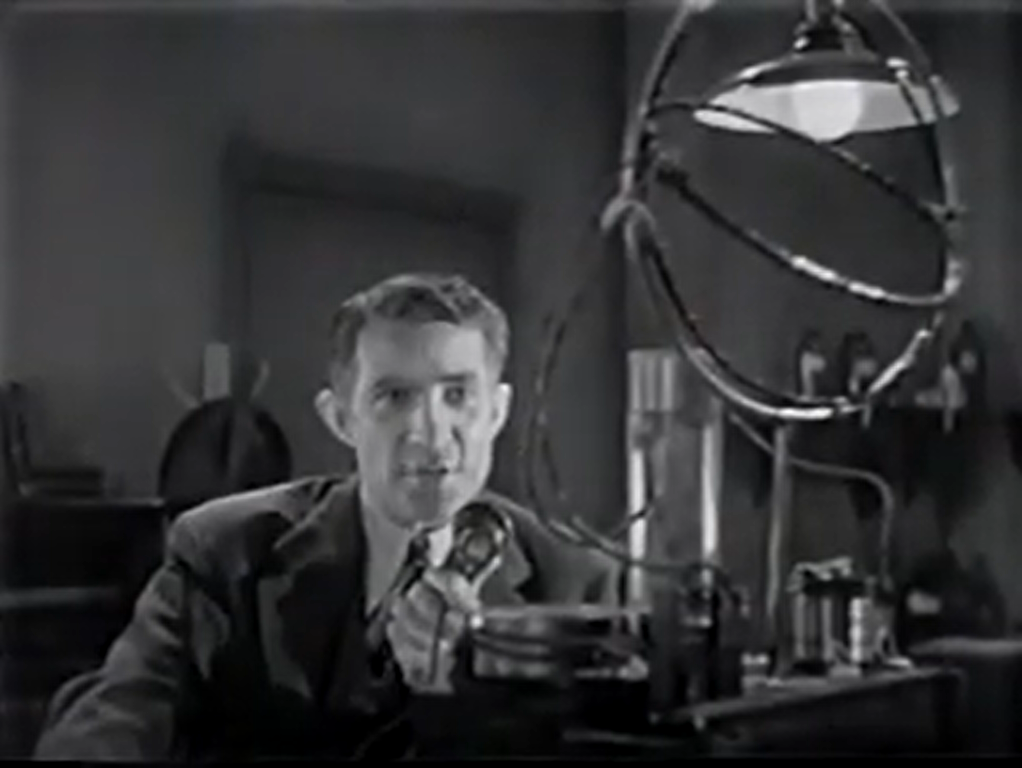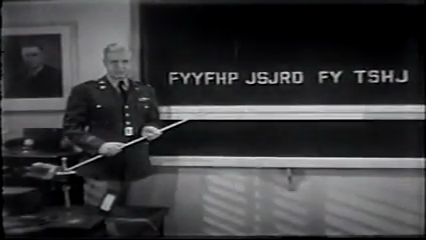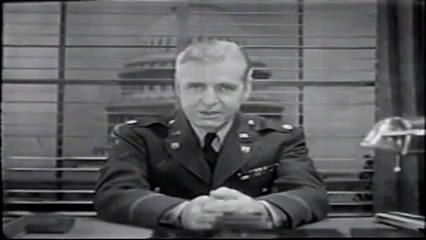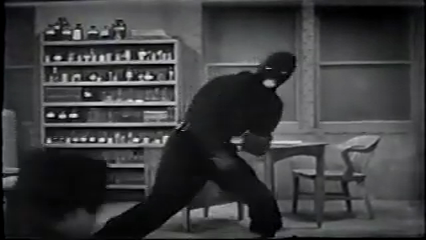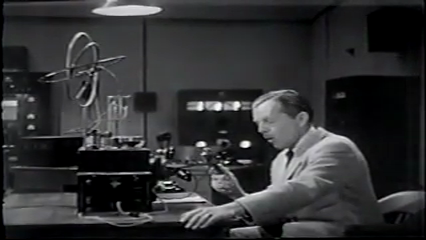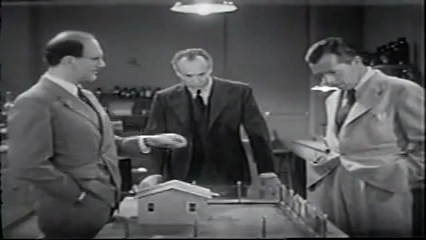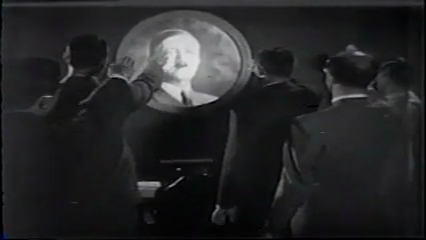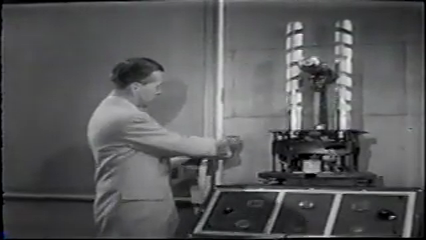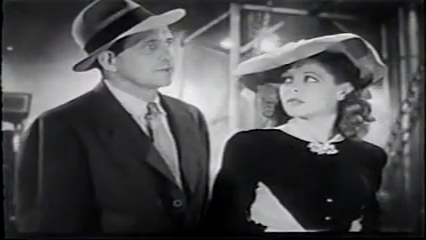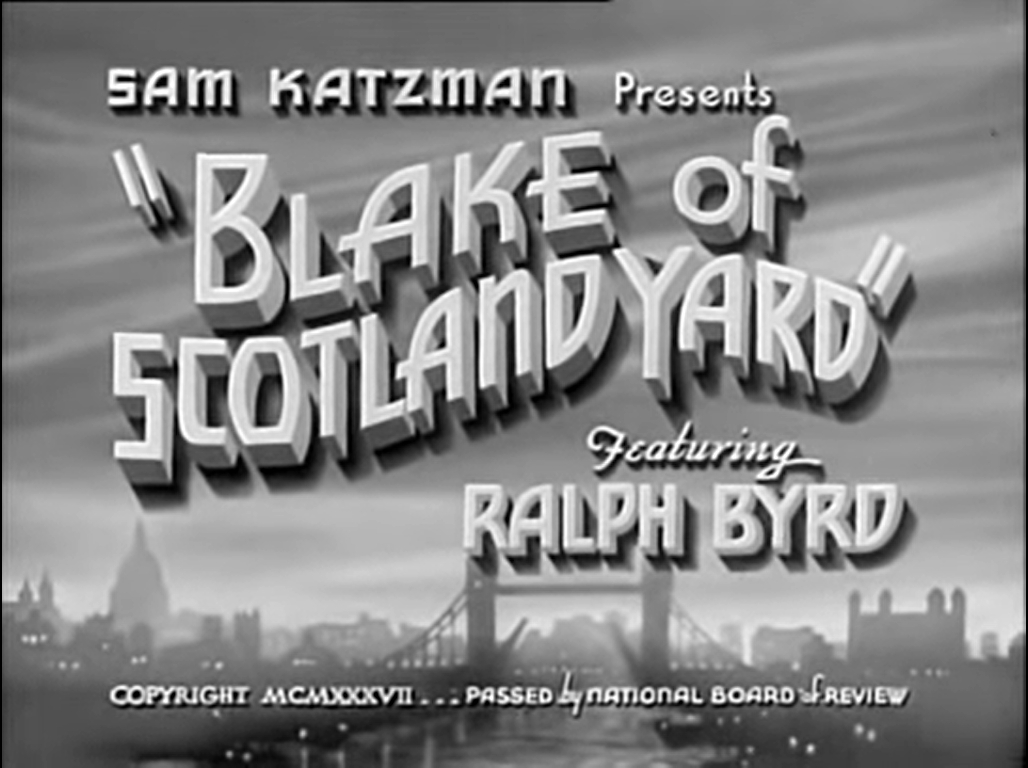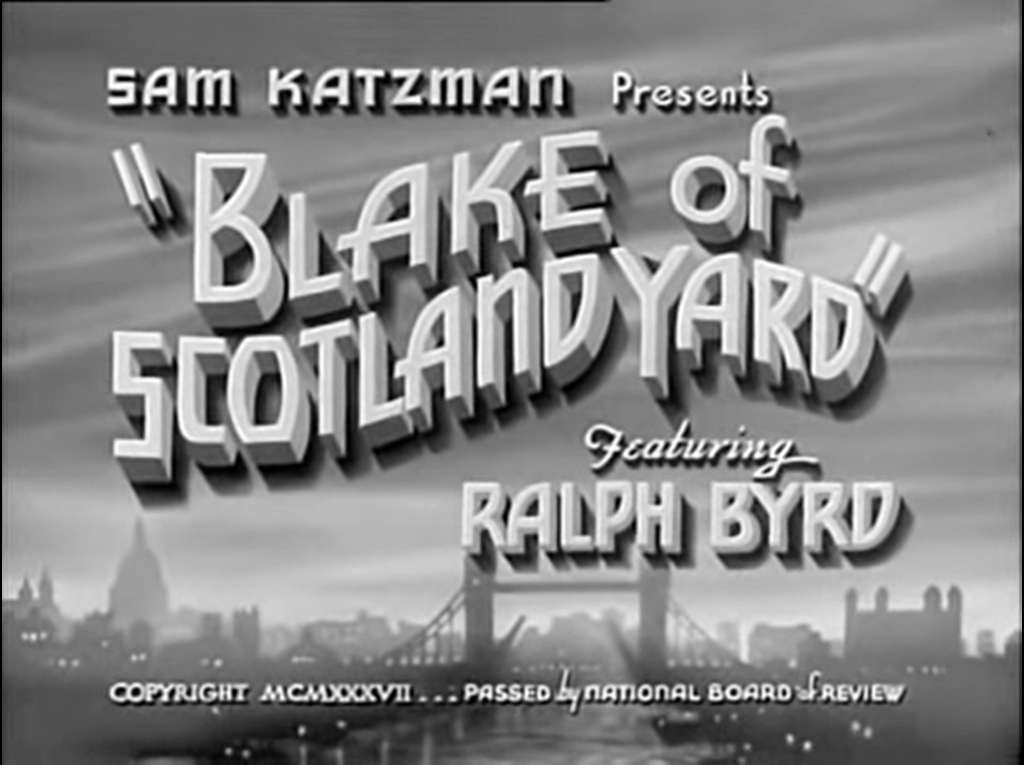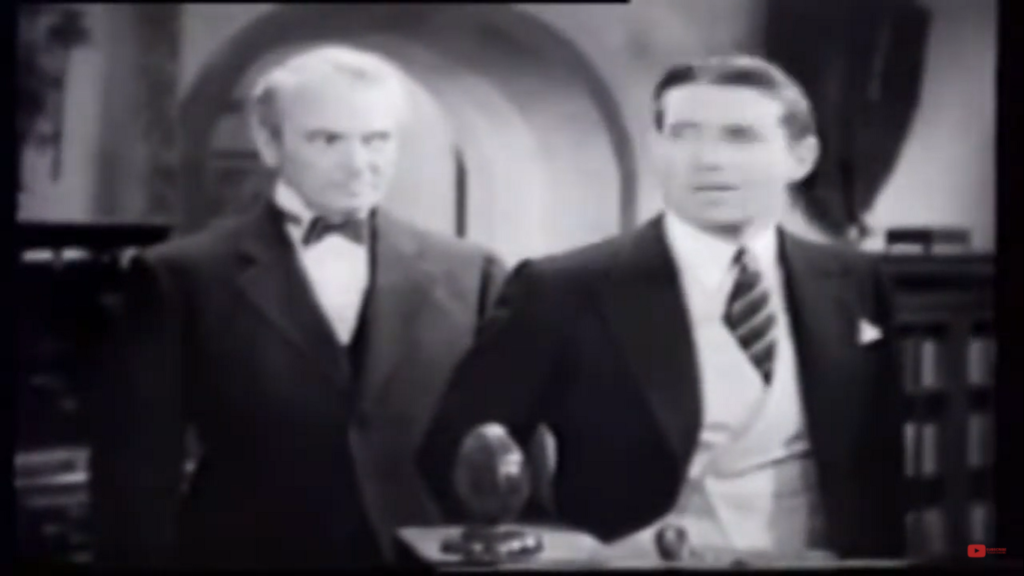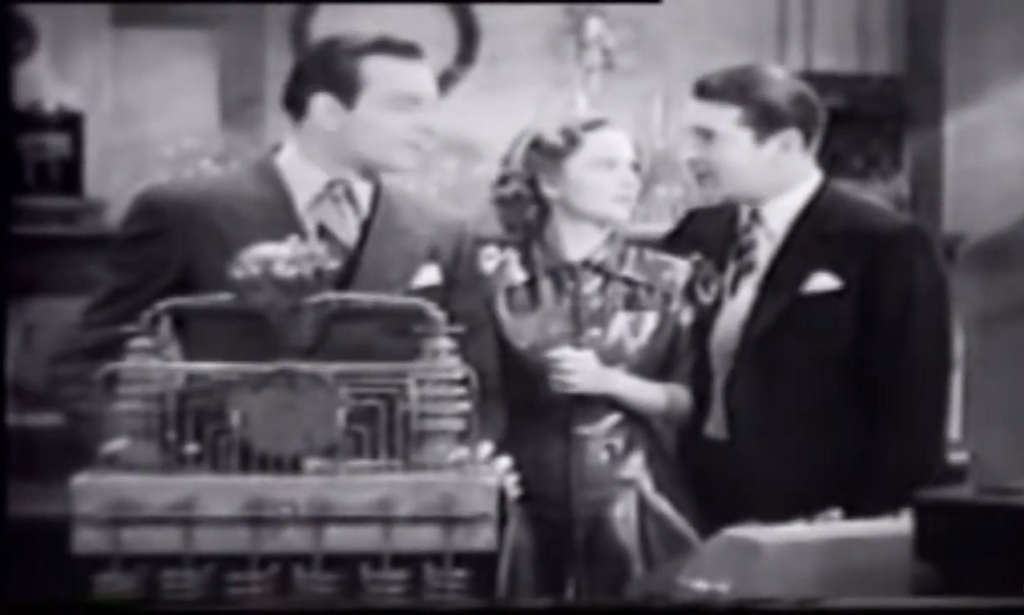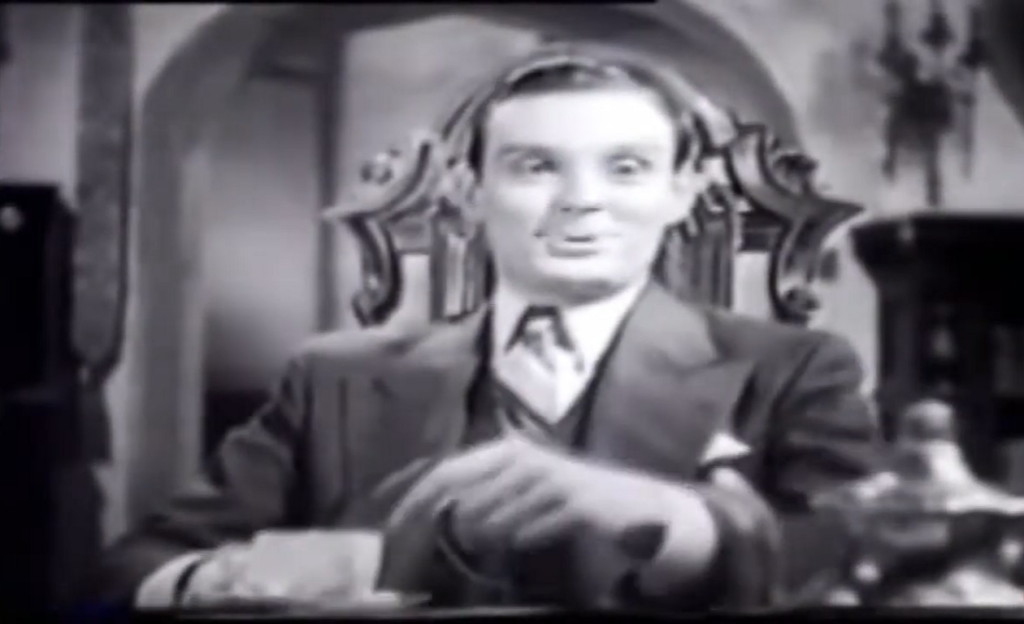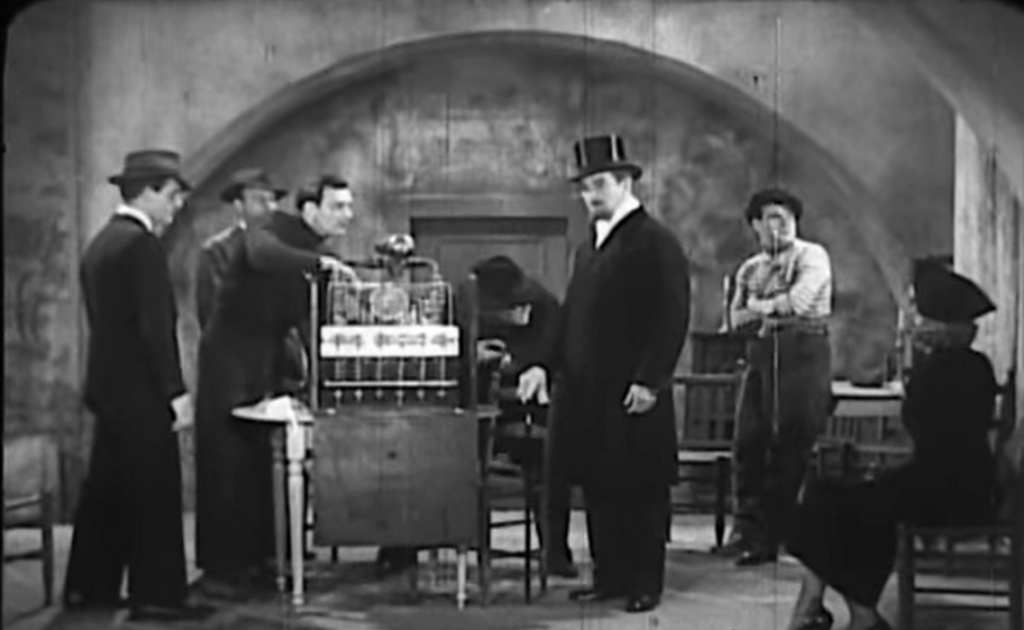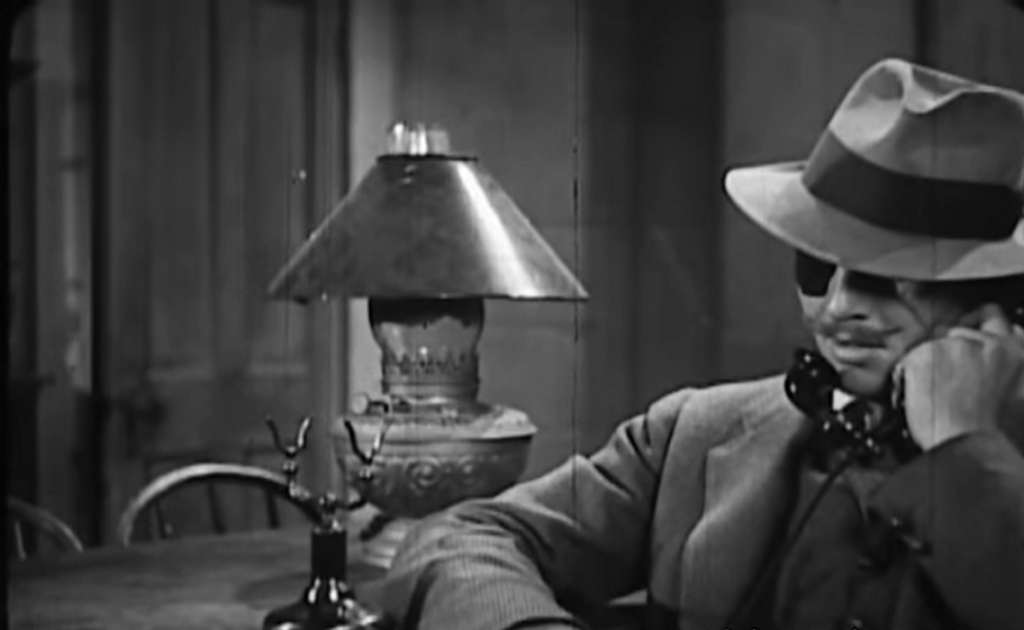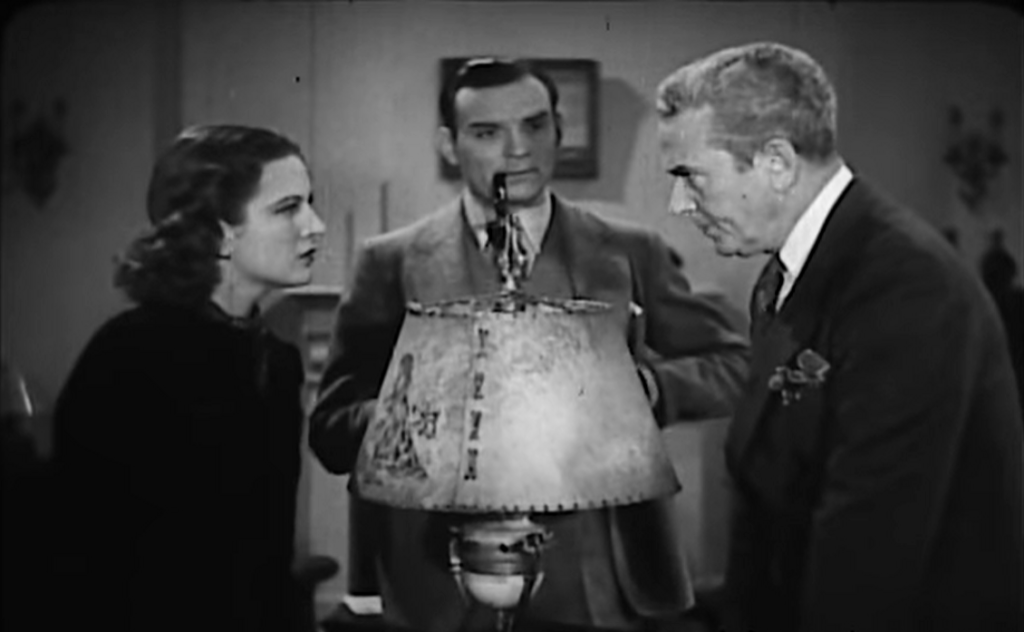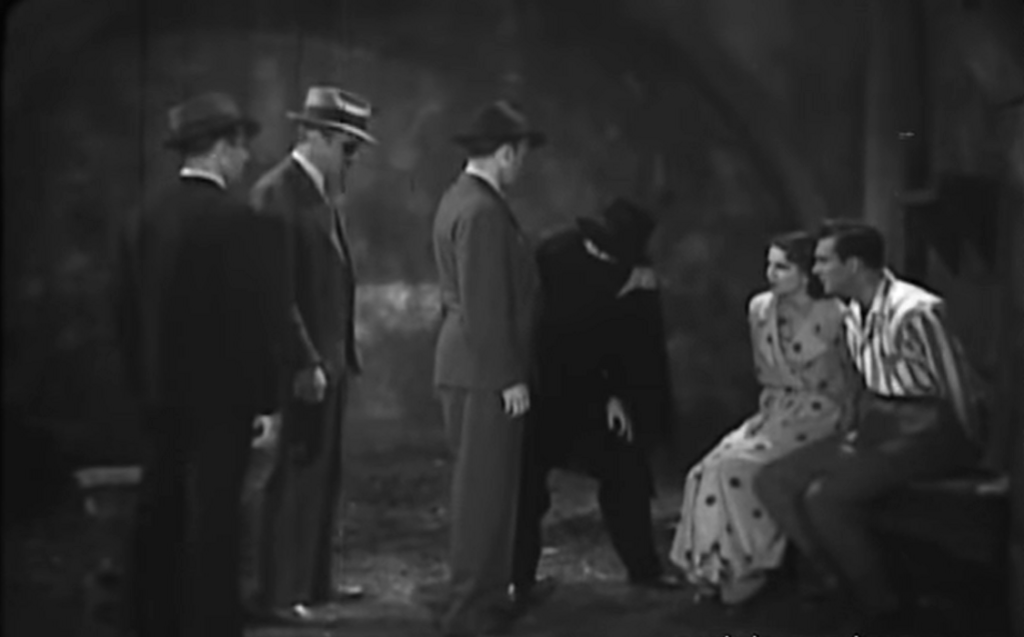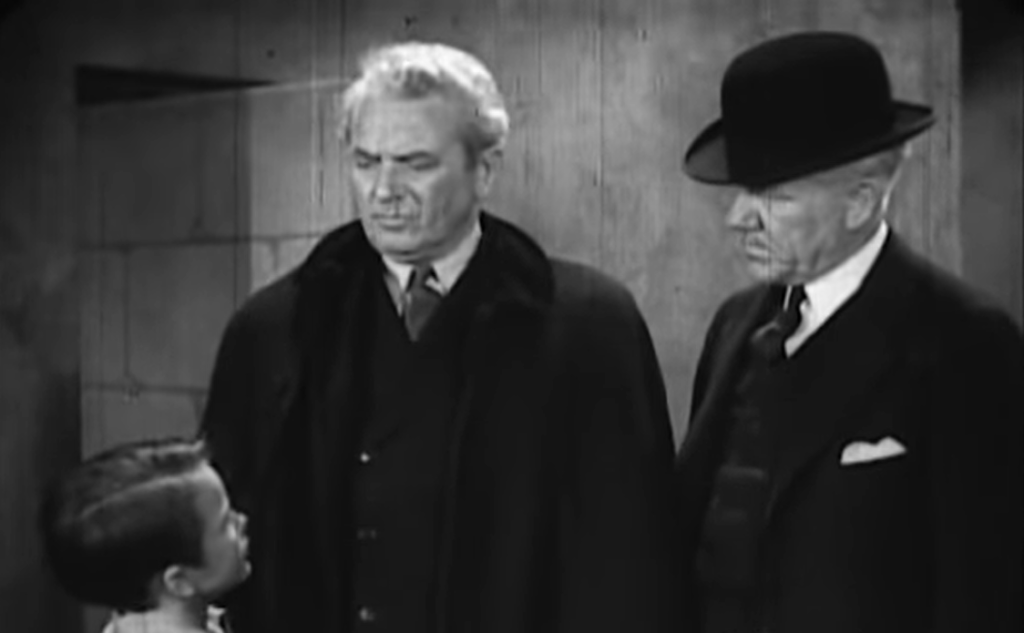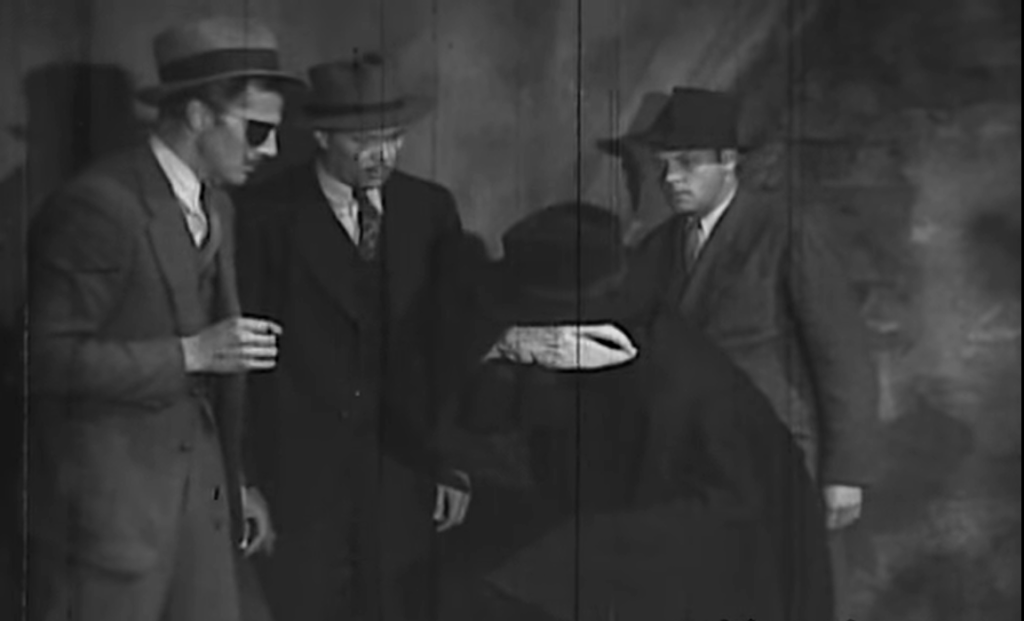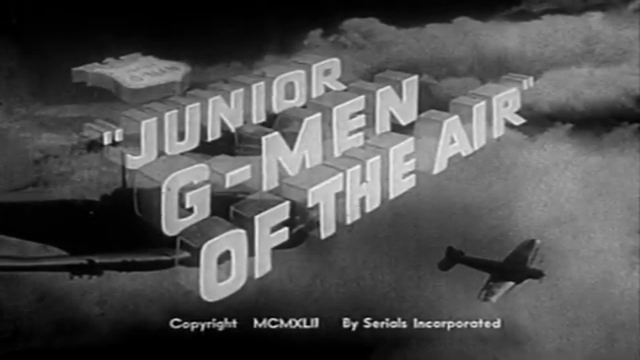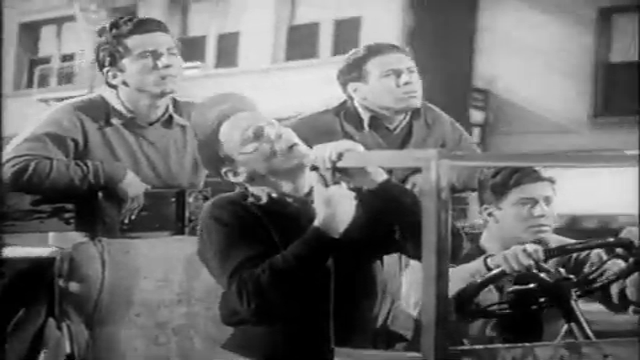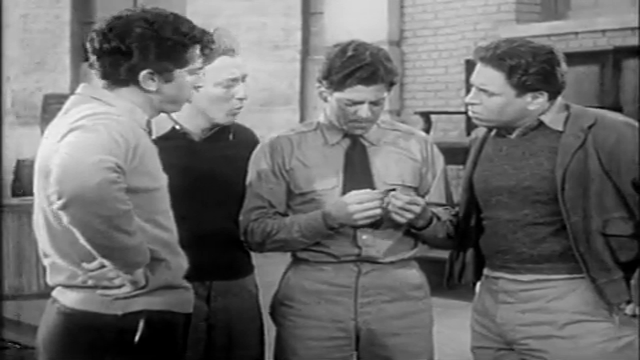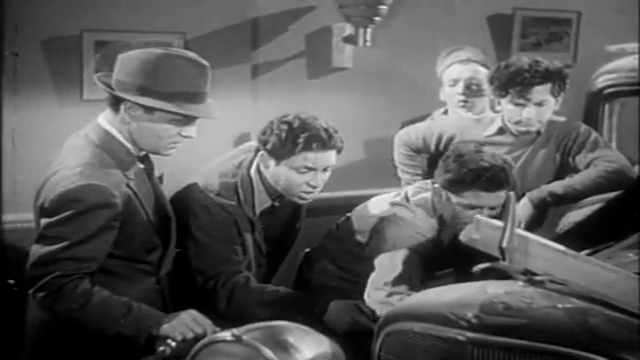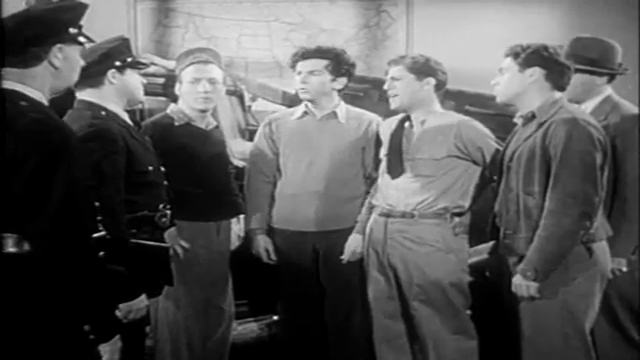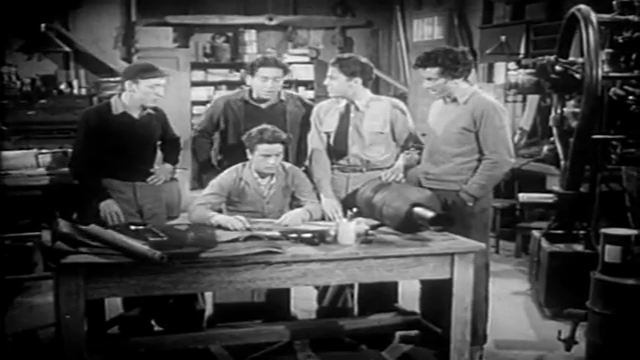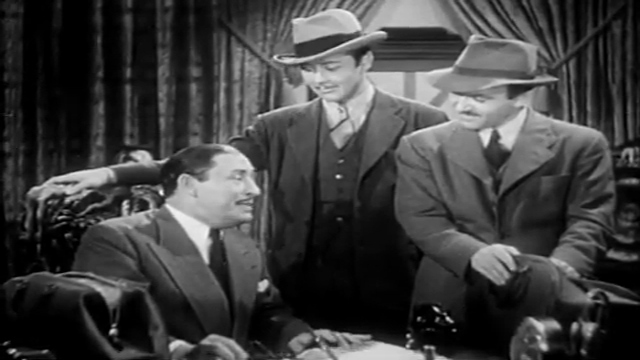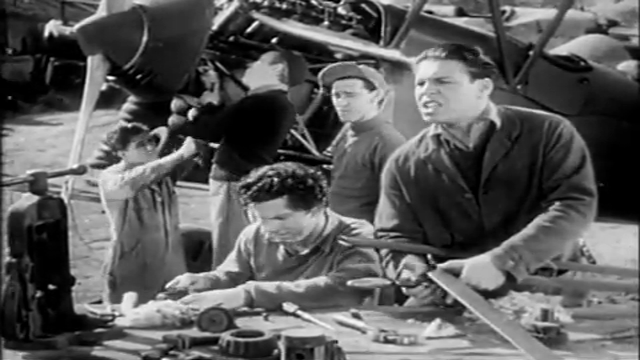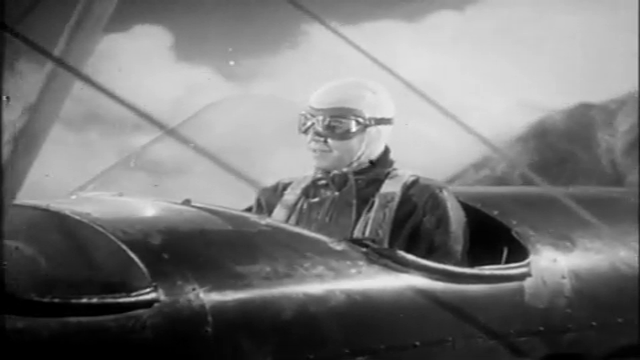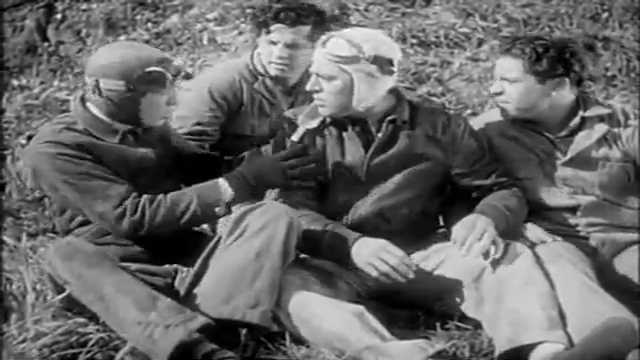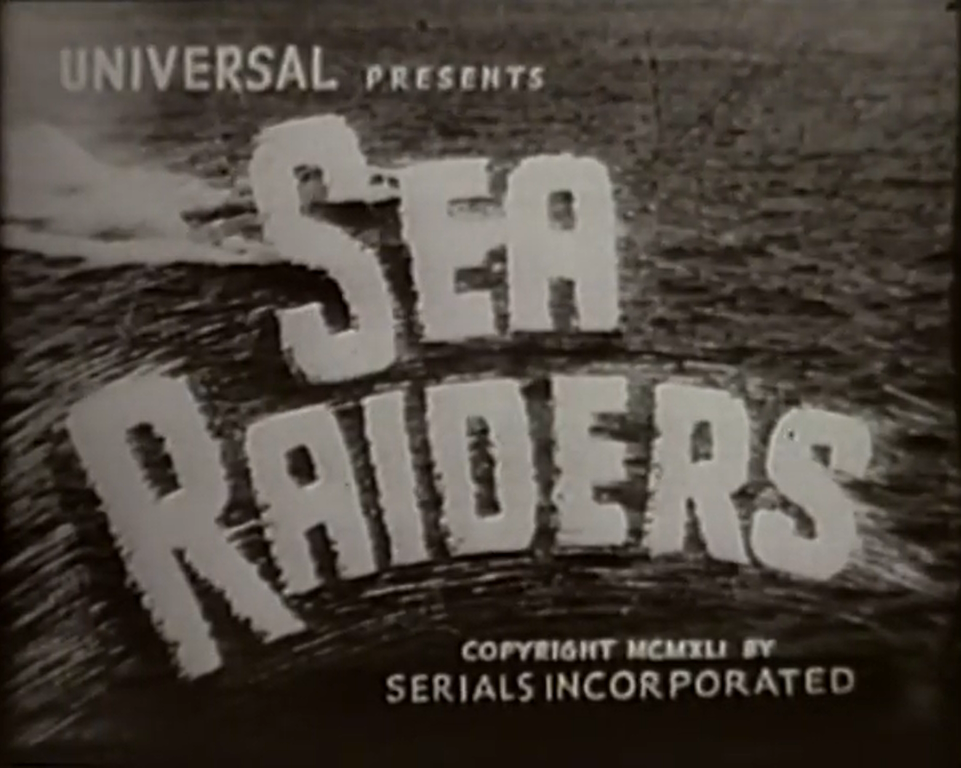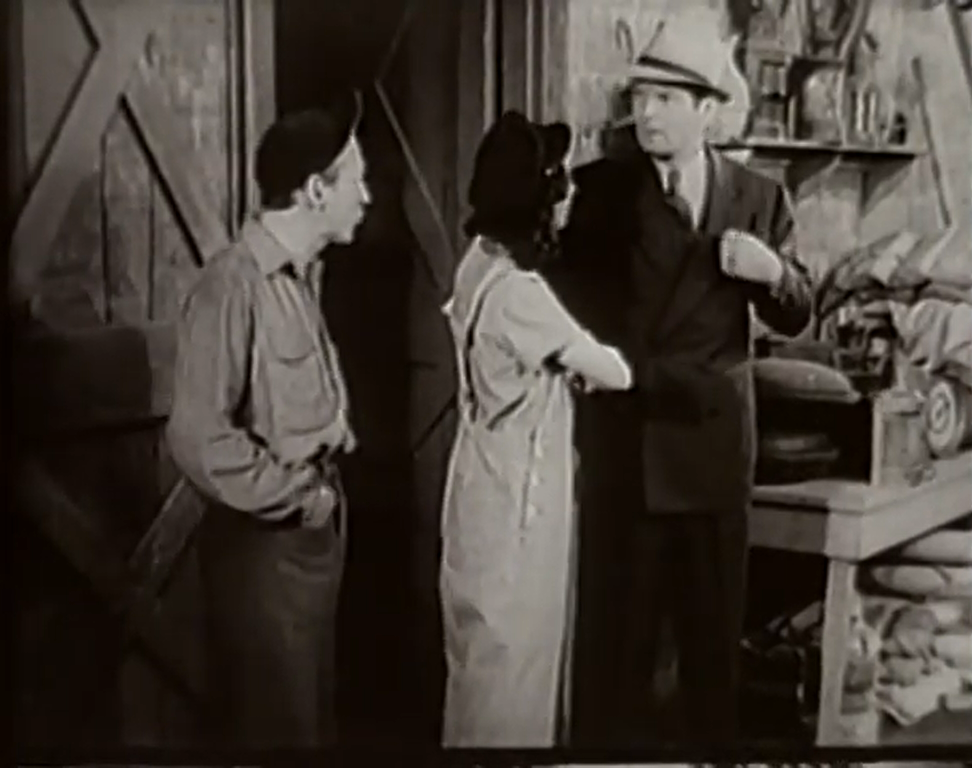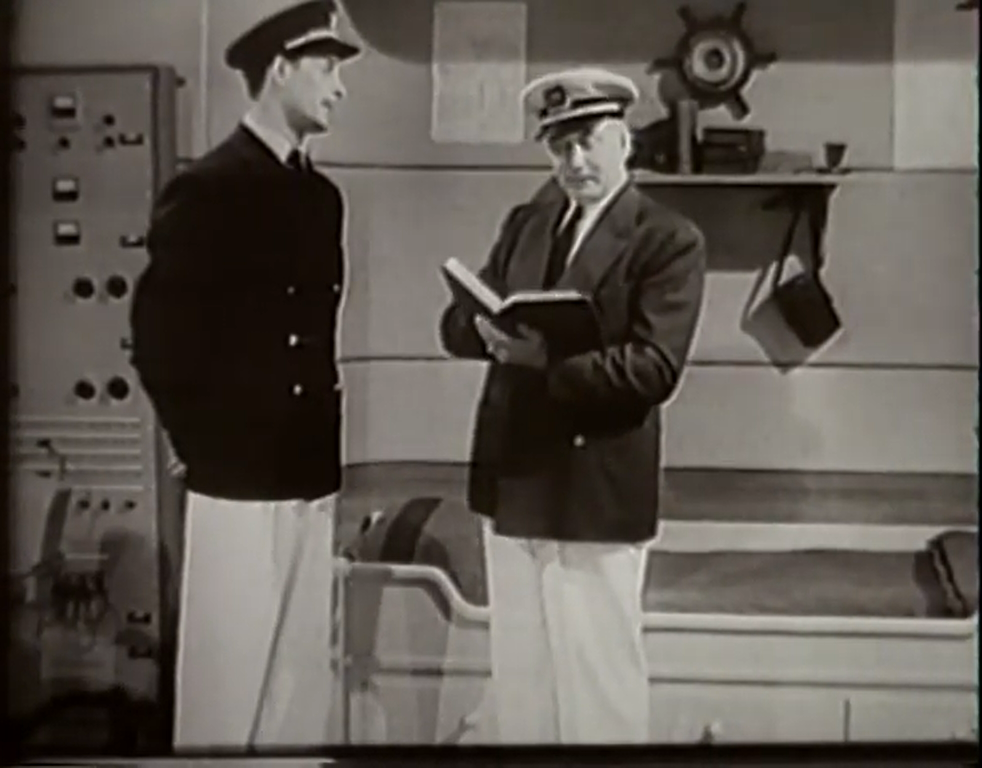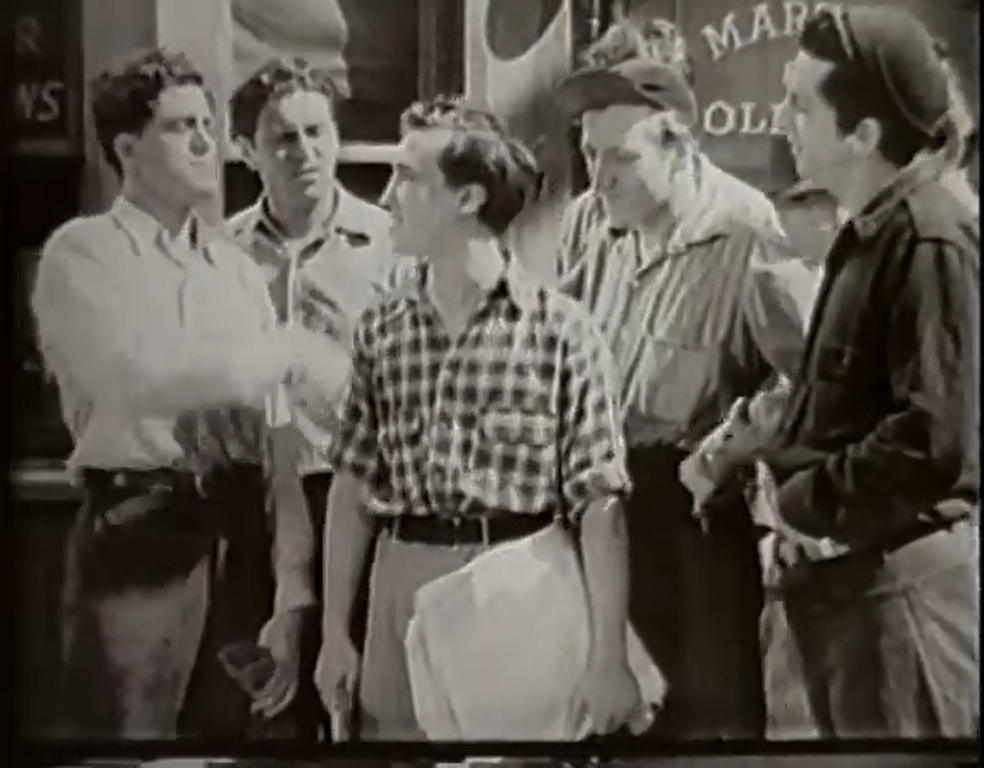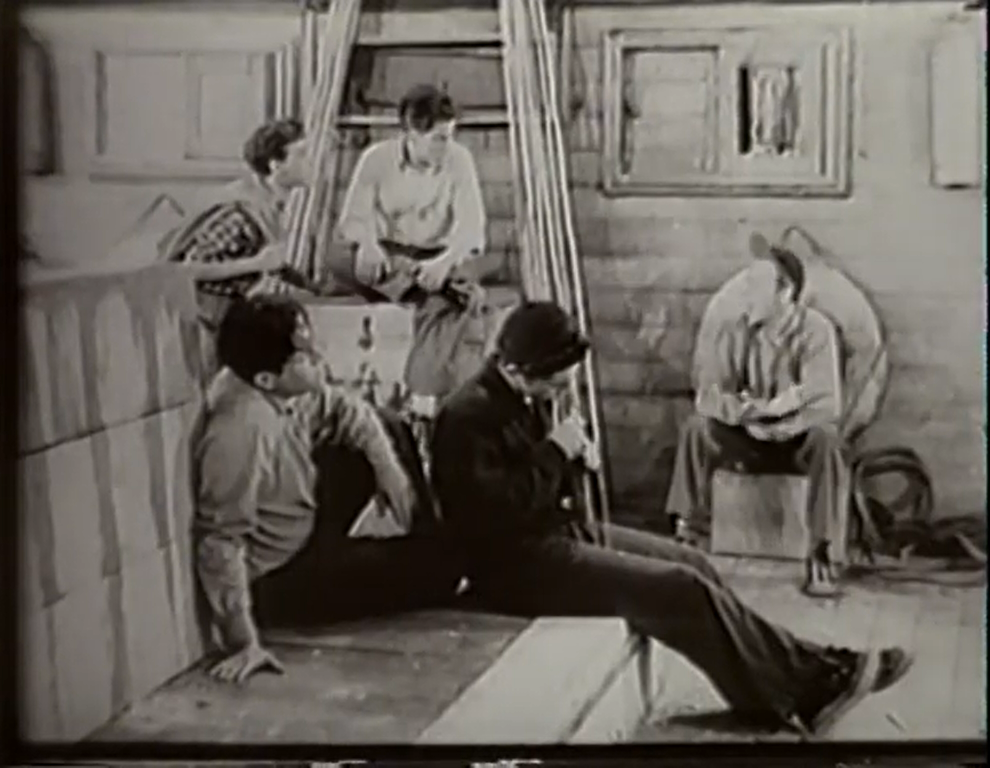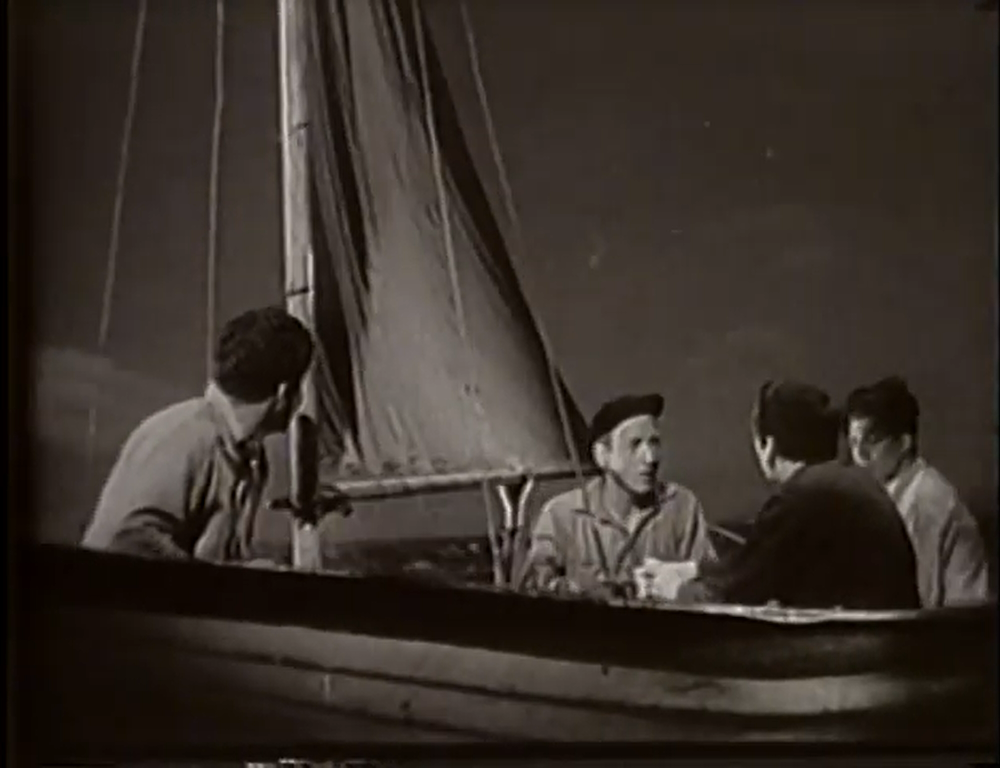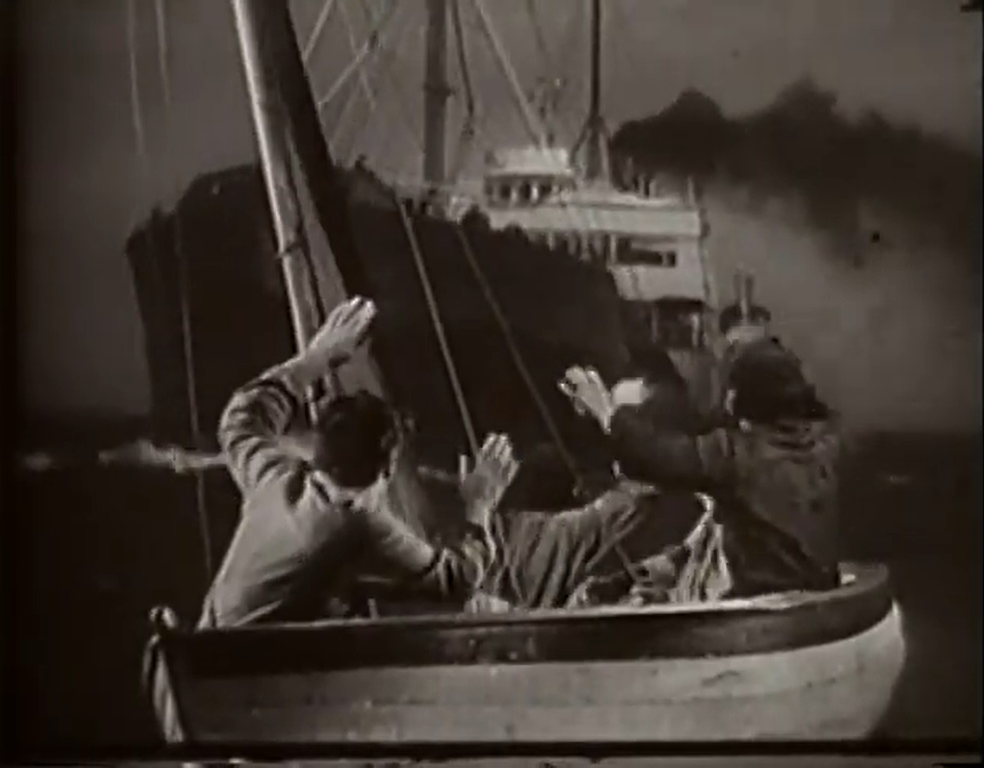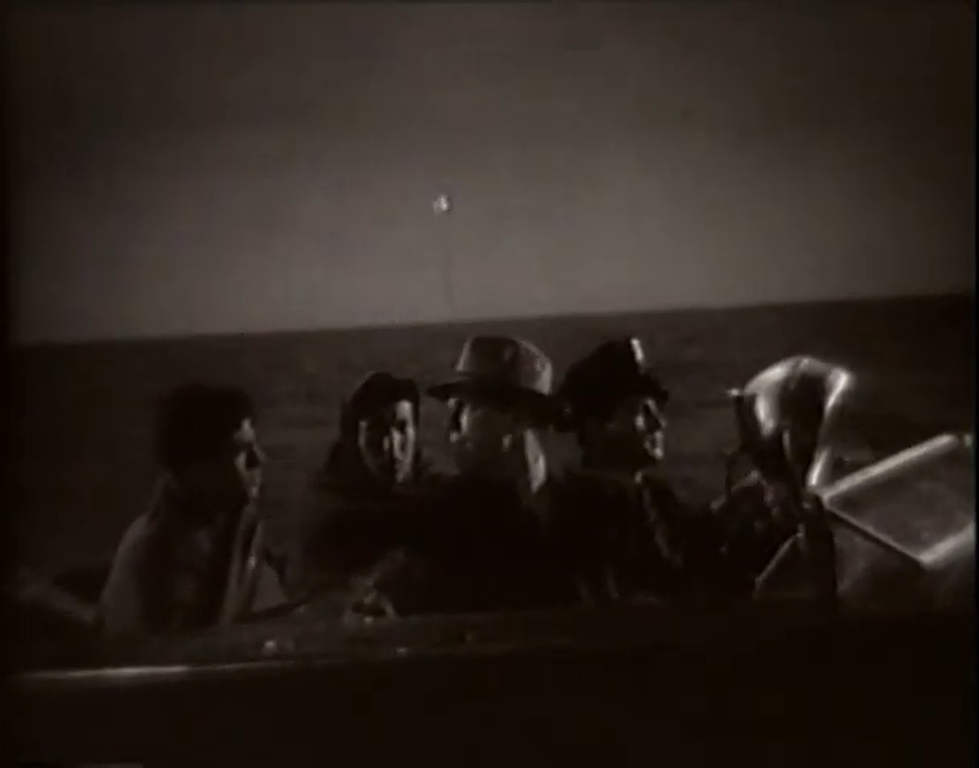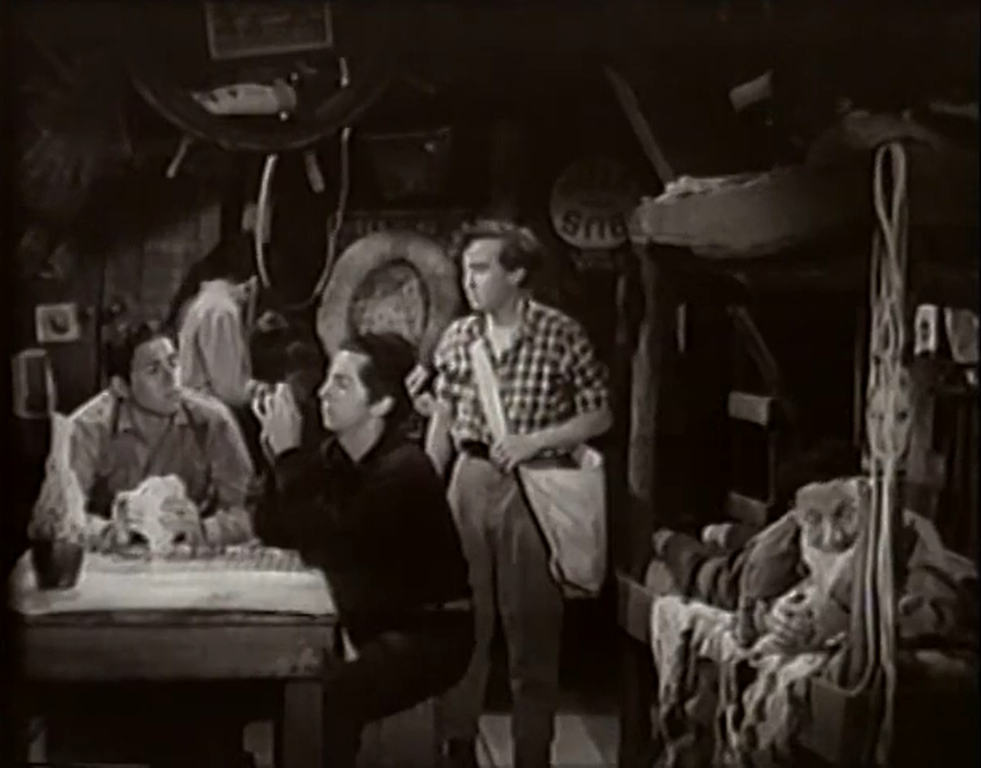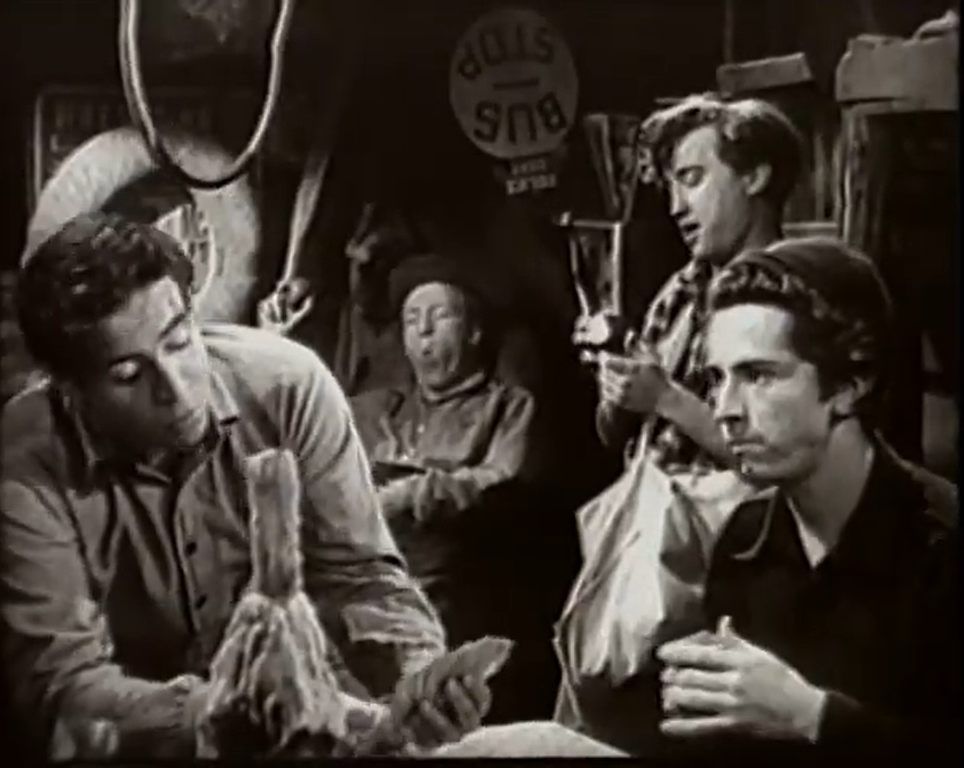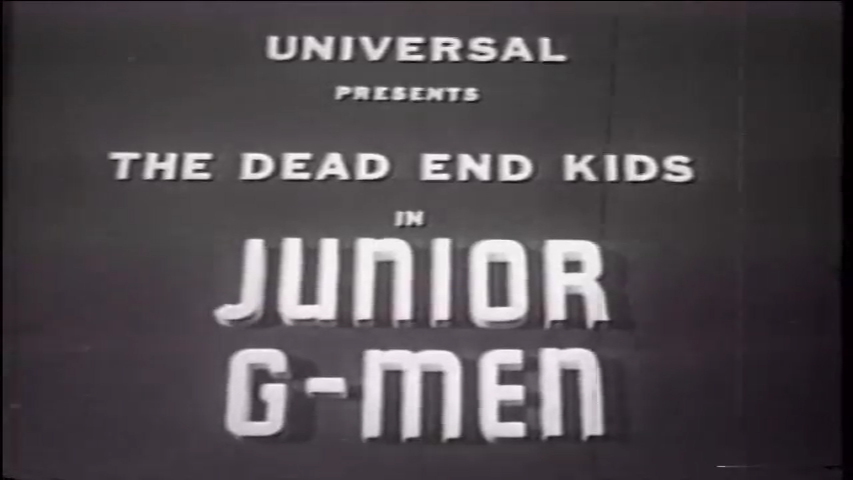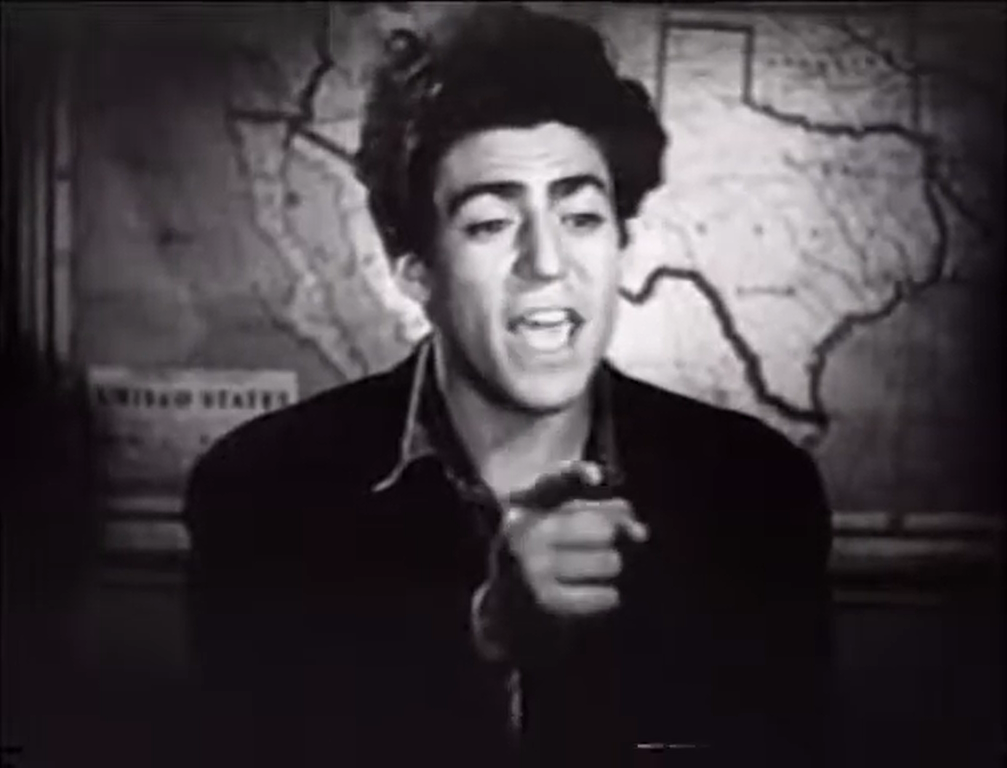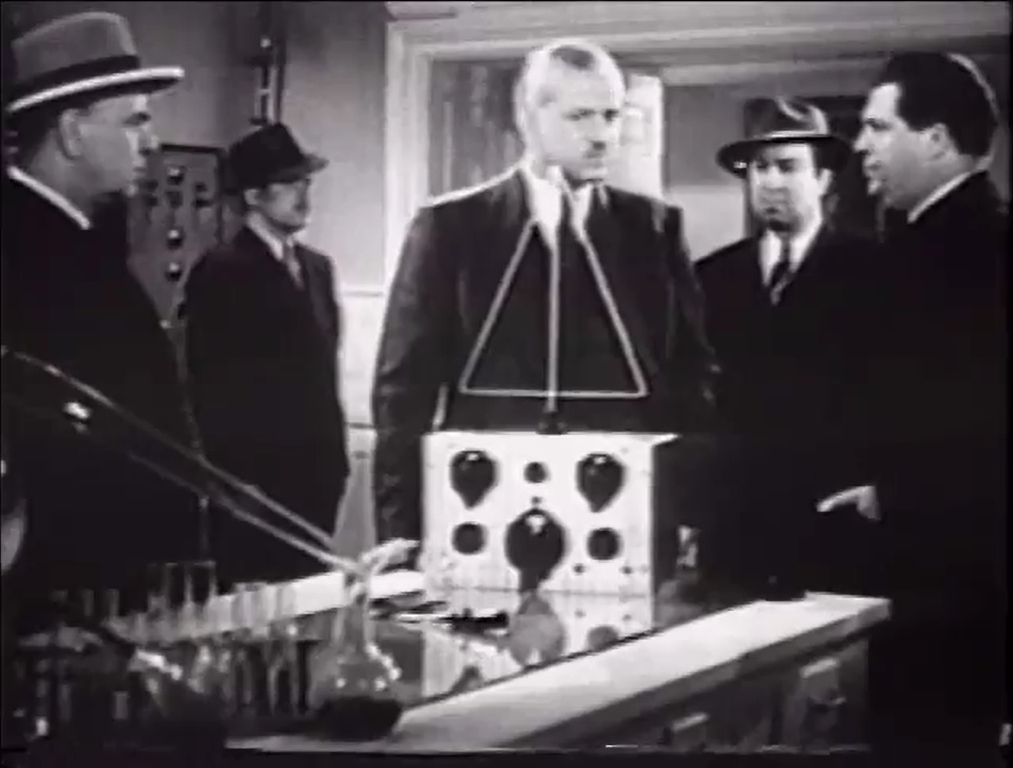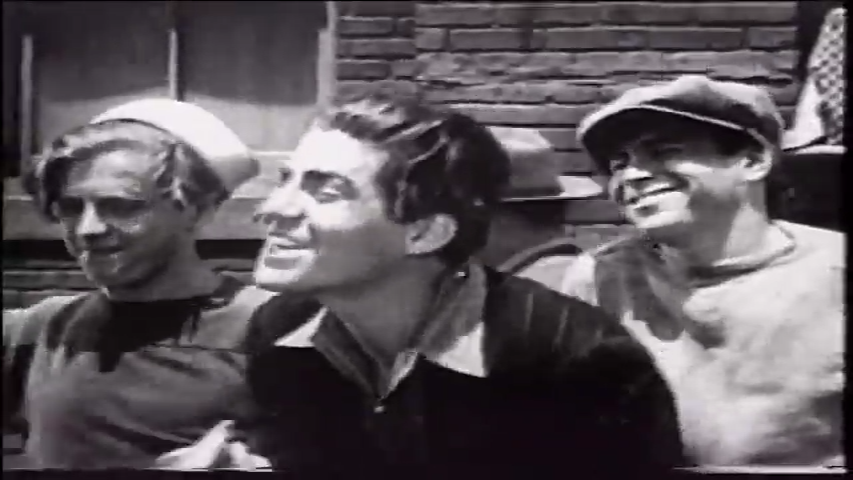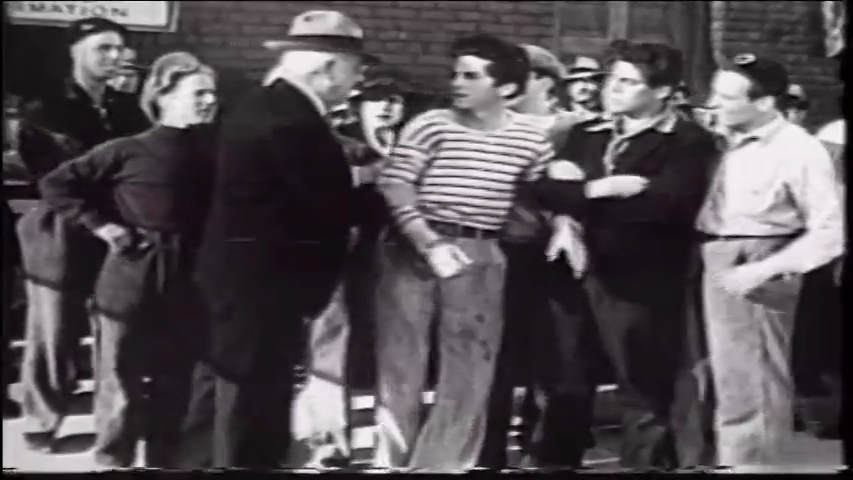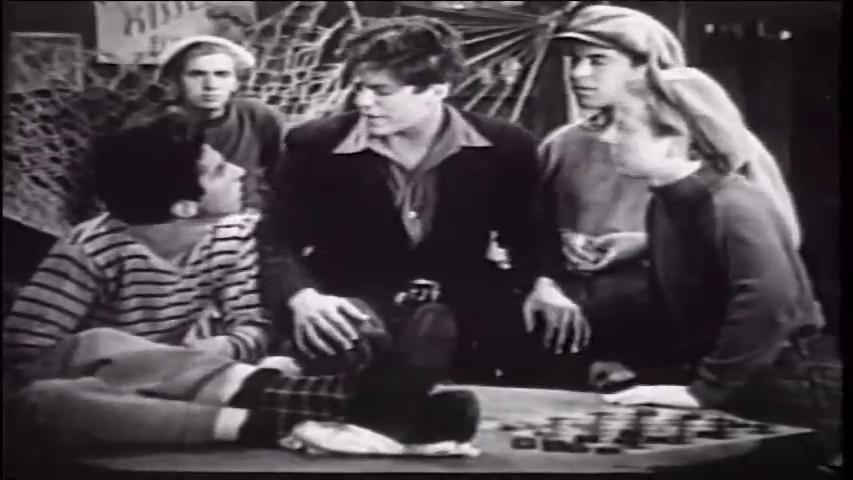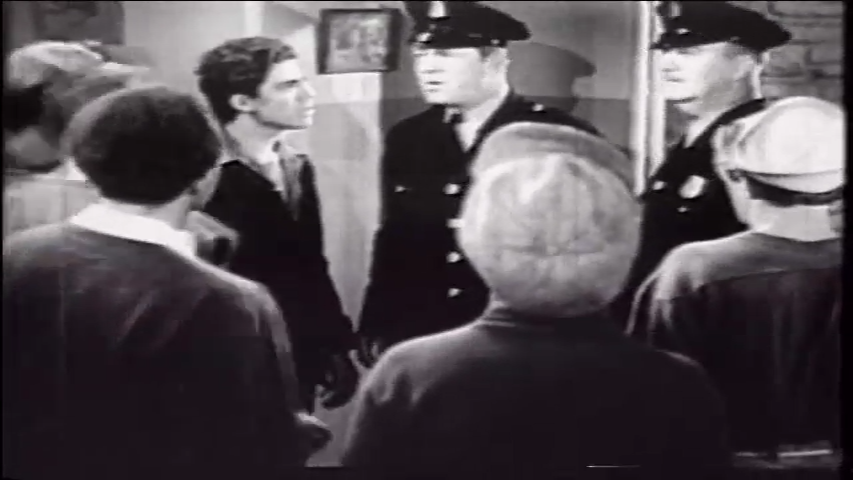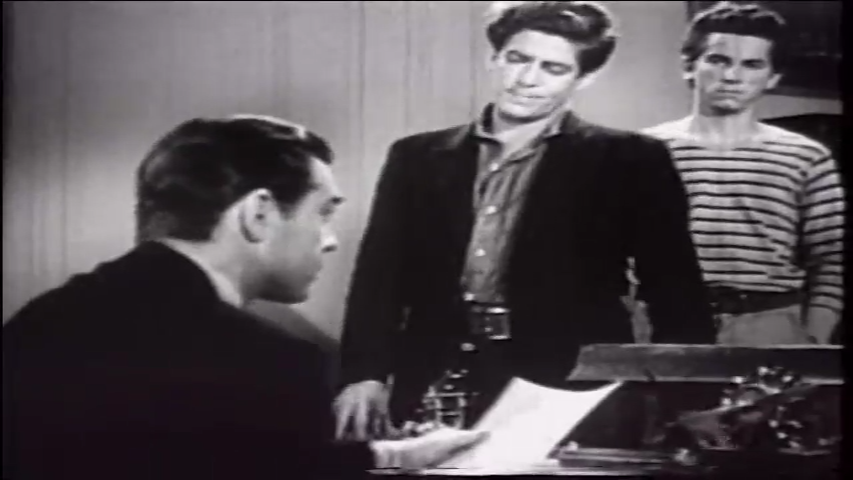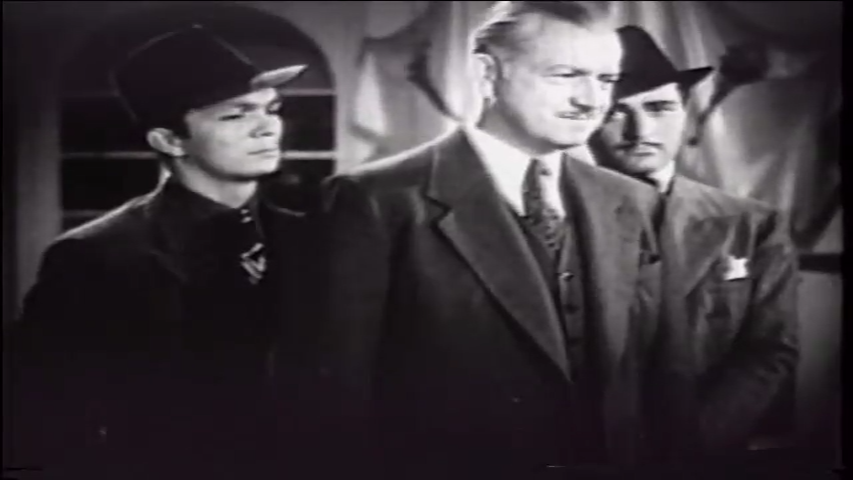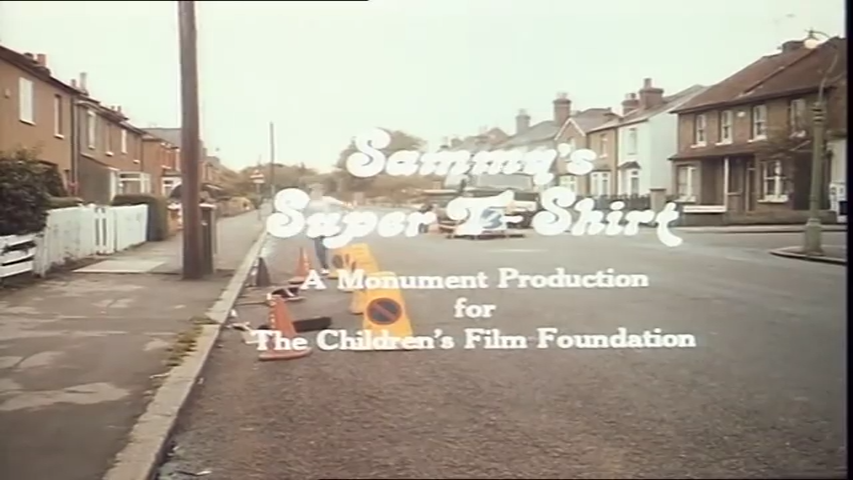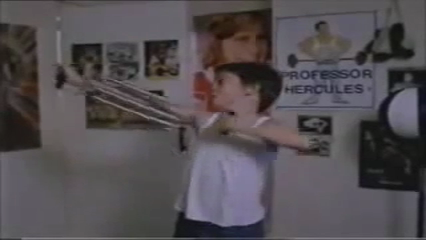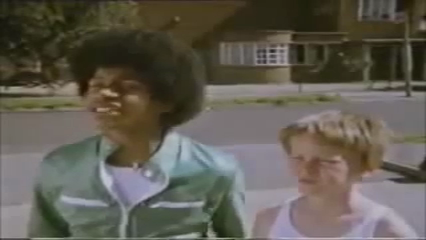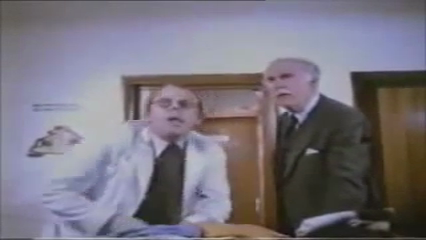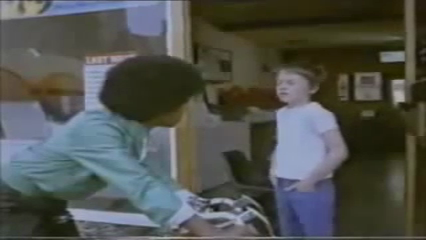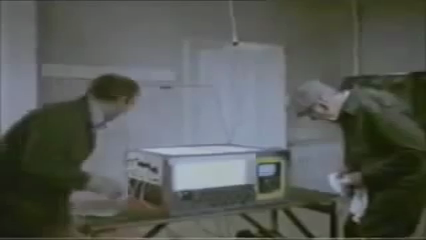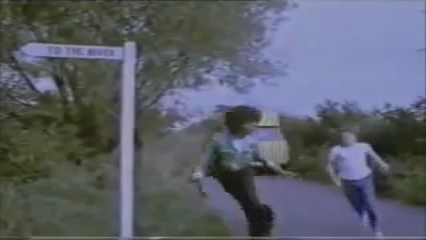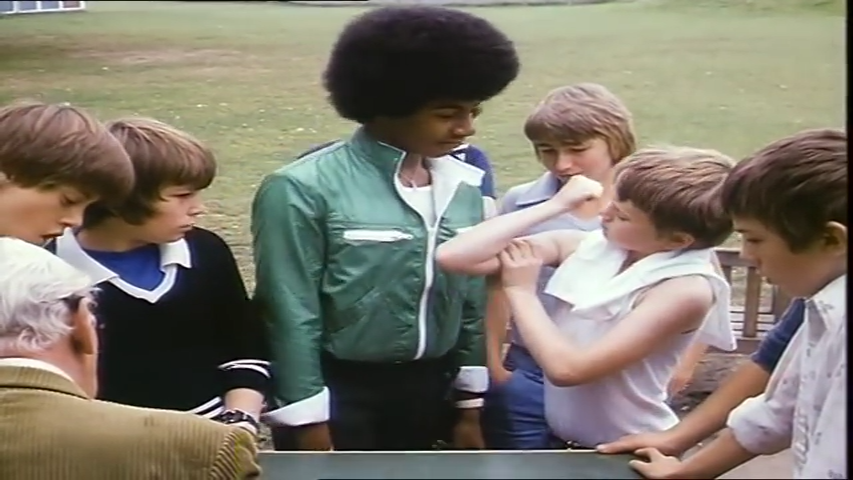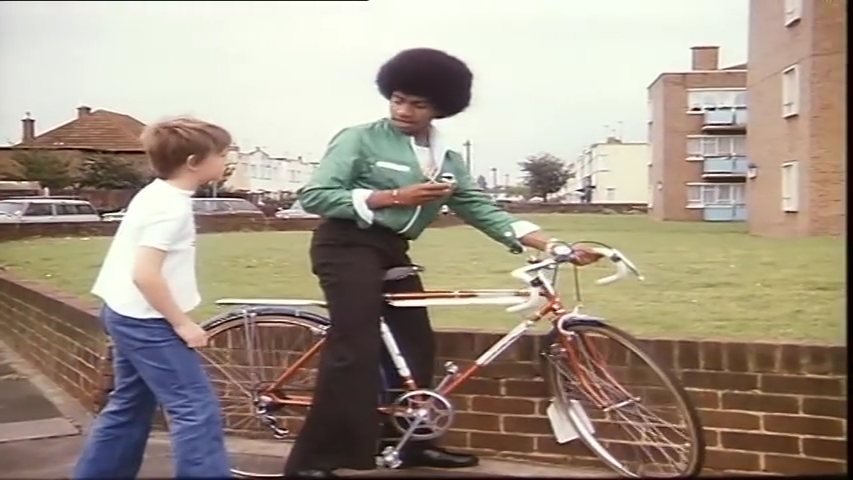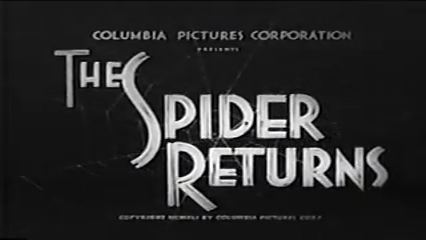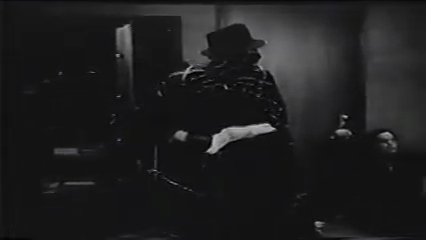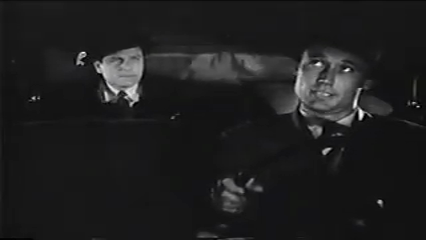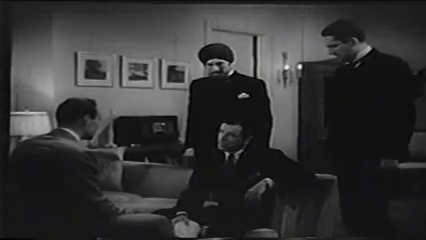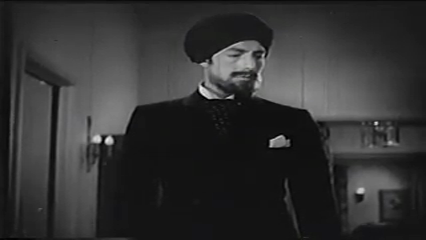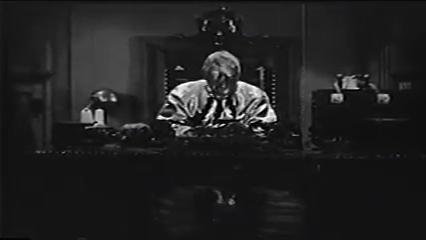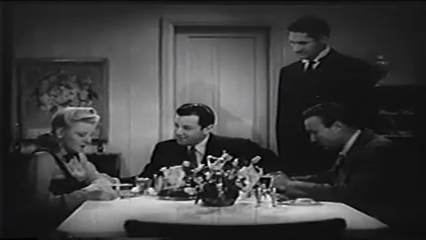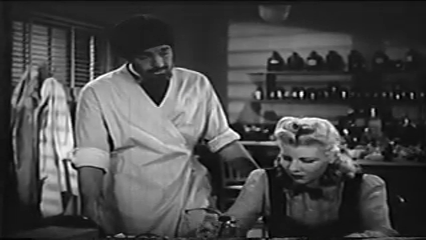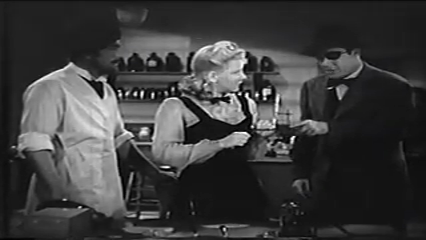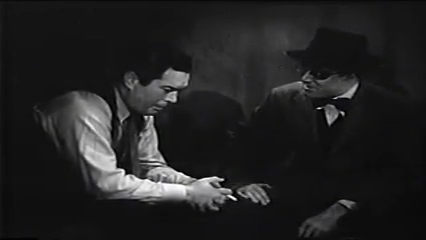-
#421 – Evil Bong 2: King Bong
Evil Bong 2: King Bong (2009)
Film review #421
Director: Charles Band
SYNOPSIS: Alistair McDowell visits his three former roommates after one of them tells him they’ve all had strange things happening to them. Alistair surmises that they are all suffering from side effects of smoking from the evil bong that they previously destroyed when it attempted to steal their souls. They contact the delivery man who delivered the bong, who tells them that the bong originated from a tribe located in the Amazon, and so the group head into the rainforest to find answers and try to cure themselves from the side-effects which have afflicted them…
THOUGHTS/ANALYSIS: Evil Bong 2: King Bong is a 2009 comedy horror film and the sequel to the 2006 film Evil Bong. The film starts off with Alistair visiting Larnell at his new apartment. Larnell remarks that he hardly recognises Alistair; a sly reference to the fact that it is a different actor playing him than the first film. The reason Larnell called Alistair over is that he and his roommates have all been afflicted by strange changes: Larnell’s libido has gone into overdrive, Bachman has developed narcolepsy, and Brett has become morbidly obese, adding strain to his relationship with his girlfriend. Alistair guesses that it must be a side-effect of them smoking from the evil bong of the first film, and tries to learn more about it. The only lead they have is the delivery guy who delivered the bong, who they arrange to come round. He tells them the stories that he himself was told when he picked up the package about how the owner picked it up when he was serving in the Amazon with the peace corps. With this in mind, the group (including the delivery guy for some reason), head to the Amazon to find the tribe and get some answers. As with the first film, the film’s plot is fairly simple. Most probably because this is designed to be a film that you watch while smoking weed yourself. There’s more of a plot than the previous film though, and everything is simple enough to follow, so that’s a plus.
The group arrive in the Amazon where they meet a scientist who has discovered a new type of marijuana that has extraordinary medical properties. When the group smoke this, they are cured of the afflictions of the evil bong. However, another of the scientist’s plans to use the new weed to sell it on the streets and become rich. He reforms the evil bong from the first film with the fragments that Larnell saved, and encounters the tribe alongside a more powerful bong called King Bong. When this new bong takes the delivery guy into his inner realm, the group decide to go and save him, with the original evil bong supporting them (apparently she is King Bong’s ex; don’t ask me how bong relationships work…). The climax is pretty similar to the first film, with the group venturing into the inner bong world where people are tricked by illusions that the bong creates. There’s nothing too spectacular about the finale, and it is resolved in the way you’d expect. The characters are pretty much the same from the first film, and the new characters add very little outside of the typical roles they fill.
Like the first film, the budget for this film is spectacularly minimal, but it does do a bit more than it’s predecessor by doubling the amount of settings from two to about four. The “Amazon” is clearly just some woods, and the bong world has nothing remarkable about it. I think the film flows better than the original, and has a few more laughs, but overall any improvements are minor. It’s not any worse, but not too much better. Like the first, you’re only going to find some value in this if you’re already high and can ‘enjoy’ the imagery and simple gags that won’t go over your head. Overall, Evil Bong 2 is a mild trip that is slightly better than the original, but still doesn’t live up to the ridiculousness of the premise that the title provides.
-
#420 – Evil Bong (2006)
Evil Bong (2006)
Film review #420
Director: Charles Band
SYNOPSIS: Alistair McDowell rents a room with Larnell, Bachman and Brett, three other college students, who are obsessed with smoking weed. Larnell orders a large bong online that apparently is possessed, and the three roommates (excluding Alistair) enjoy it’s benefits. However, things take a dark turn as the bong starts killing them off one by one after they smoke from it and are taken into the “bong world” where the spirit of the evil bong has total control, and enacts a deadly plan to turn the world into eternal stoners…
THOUGHTS/ANALYSIS: Evil Bong is a 2006 comedy horror. The film starts out with a college student named Alistair McDowell going to rent a room with three other students, all of whom continually smoke weed (while Alistair never does, he is not opposed to them doing it). With Alistair’s rent money, Larnell, one of the other students, now says he has enough money to buy an extravagant bong he has found online. There is a warning from the previous owner that the bong is possessed, but that doesn’t stop Larnell from purchasing it. When it arrives, the three (excluding Alistair partake in smoking from it. Later that night, Bachman hears the bong calling him and when he smokes it, is transported into the “bong world” where the bong has the power of illusion and kills Bachman. The remaining roommates notice that he is dead in the morning and attempt to hide his body when Larnell’s grandfather pays a visit. As the film progresses, the rest of the cast are sucked into the bong world as the evil bong grows more powerful, leaving Alistair to enter the bong world himself in order to defeat it. The plot of the film is rather minimal: there’s an evil bong that kills people when they smoke from it. That’s the movie. One of the key things about this film is that it’s more than likely aimed at people who are already high when they are watching this, so they aren’t going to really be able to follow an intricate story. With that in mind, the film just needs to have a few cheap laughs and some surreal imagery and I suppose it does that in the most minimal way possible, with some unoriginal funny lines that may get a chuckle because they always do no matter where they’re used, but again, anything more complex probably isn’t going to get the audience’s attention.
The characters are all pretty bland, with their personality consisting of exactly one trait. Alistair is the straight-laced nerd, Larnell is a typical stoner, Brett is a jock, and Bachman is a “surfer dude.” They have no personality outside of these tropes. You can quite easily swap around the latter three and it would have no effect on the story, as each of their “unique” personalities contributes to about one joke each in the entire film. Some other minor characters include Larnell’s grandfather, whose one extended scene adds nothing to the film, and also the evil bong’s former owner, played by Tommy Chong (look him up if you don’t know who he is). There’s also a fair few cameos from characters from other films made by the same production company, but I didn’t recognise any of them because I haven’t seen any of the movies. The only one I have seen is the Trancers series, from which Jack Deth makes a brief cameo, but I didn’t recognise him, and I’m not sure anyone would since the Trancers series is hardly a keystone of film history (despite their being six films in the series). The evil bong herself is an animatronic face with limited movement (the lips definitely don’t sync to the words she says), and it’s a bit trippy, but nothing amazing.
I’m going to assume that this film had no budget, as the entirety of the film takes place in the roommates apartment. The various characters come in and out, but most of the time it’s just the four main guys bantering or smoking weed. The only other location in the film is the “bong world” where everyone goes after they have inhaled from the bong. This world is apparently a strip club where the bong has the powers to create illusions and kill those who are trapped there. It’s a fairly drab and dark setting so you can’t really see what’s going on, but undoubtedly viewers will be more focused on the semi-nudity in these scenes anyway. There’s some surreal-ish imagery that accompanies these scenes with marijuana leaves flying around the screen and a hazy border around the film, but it’s hardly psychedelic and mind-bending…unless you’re already high I suppose. Overall, Evil Bong is a pretty stupid film, but it knows it and doesn’t try to be anything else. It’s obviously intended as a film to get high and watch, so there’s nothing remotely complicated, and also nothing to really make sense of.
-
#419 – Bill and Ted Face the Music (2020)
Bill and Ted Face the Music (2020)
Film review #419
Director: Dean Parisot
SYNOPSIS: Bill S. Preston esquire and Ted “Theodore” Logan were supposed to unite the world through their music. Nearly thirty years after they played a gig to the world, they are still yet to write the song that will they are destined to actually unite the world with. Now married with grown-up children, Bill and Ted are confronted with their failure by being told that reality will cease to exist unless they can write the song. Bill and Ted have the idea to travel into the future and take the song from themselves when they’ve written it, while their daughters Billie and Theo travel into the past to gather up some famous musicians to help them out. However, the Great Leader of the future has lost faith in the duo, and has sent a killer robot to track them down through time and kill them, believing that their deaths may be able to save reality…
THOUGHTS/ANALYSIS: Bill and Ted Face the Music is a 2020 sci-fi comedy film, and the third film in the series, after 1991′s Bill and Ted’s Bogus Journey. The film opens thirty years after the events of the previous film, with Bill and Ted playing the music for the wedding of Ted’s younger brother Deacon, and Missy who was Bill’s step-father in the first film, and Ted’s step-father in the second, which makes for a humourous scene that brings together a lot of the characters of the previous films, and shows what they have been up to in the twenty-five years since we saw them last. However, for Bill and Ted themselves, the last twenty-five years have not been so kind, as they have constantly failed to fulfil their destiny and write the song that will supposedly bring universal harmony and save reality. They are summoned to the future where they are asked to explain their actions, but their usual charm doesn’t seem to be working this time. They are forced to work on the song as the timer counts down to when they must perform it. They have the idea to instead travel to the future and take the song from themselves when they have written it, and so begins another ‘excellent adventure’ for the duo as they travel to various points in their future to find the song they supposedly have to write. After a thirty-year gap between films, there is undoubtedly a lot of expectations for someone who grew up watching these films for this new one to live up to the nostalgia of the first two. Thankfully, and perhaps even surprisingly, this film manages to capture the feel of the previous films, while also taking them somewhere new through the future and possible realities. At the heart of it though, is still this unshakeable friendship between two rock-loving guys which forms the basis for bringing out the very best in the entire universe. The film acknowledges its predecessors through both returning many of the characters, and also small little references which will make you laugh if you recognise them. The Bill and Ted films were never perfect or perfectly-polished masterpieces; they were just a fun adventure about two ordinary guys who have extraordinary adventures, and this film fits in perfectly to that. It didn’t have to be made, but it was made for the fans that have such a fond memory of the films, and through the return of the original writers and many of the characters, it’s hard to see how they could have made a better movie to round off the trilogy. Like I say, the previous films aren’t perfect and neither is this one, but again that nevertheless binds them together.
The main plot of the film is mostly split into two: firstly, you have Bill and Ted travelling to visit themselves in the future to find the song that they will supposedly write, and take it back to the present. In doing so, they come across many versions of themselves where they didn’t write the song, and their lives have fallen apart, including their wives leaving them. Bill and Ted, through this constant time-hopping, are brought into contact with the consequences of their actions, and try to avoid their bad futures by fixing the present. This again reflects the tireless wholesomeness of the duo as they recognise their mistakes and try to do everything they can to fix them. They are also being chased down by a robot from the future, sent by the Great Leader who believes that since Bill and Ted fled from the future and making the song, another interpretation of how to save reality would be to kill them, and so she sends the robot to do it. The series has never really needed villains: in the second film, the villain doesn’t really have much of a role to play himself, but rather just sets things in motion. The driving force of the films has always been about Bill and Ted learning something and improving themselves, rather than defeating an overarching villain, and again, this film does that too. The killer robot does have a small redemption arc as he is integrated into the cast, and it again shows how Bill and ted can win over just about anyone. The other main plot point concerns Bill and Ted’s daughters Billie and Thea, as they try and help their Dad’s out by travelling into the past and collecting famous musicians to help with performing the song. This element of the plot is a little weaker than the scenes focusing on Bill and Ted, and is quite similar to the first film. Nevertheless, there’s still plenty of laughs to be had, and Billie and Thea are genuinely likeable characters, in that they reflect their Father’s mannerisms and optimism, combined with being adults of the 21st century. More could have been done with their characters, but I think keeping focus on Bill and Ted themselves is the appropriate decision. Kelly, who is the daughter of Rufus, the duo’s mentor from the first two films, is also a fun character who doesn’t have the coolness of her father, but is still doing her best. Although she is not her Father (the actor who played him, George Carlin, passed away between the film), her belief in Bill and Ted reflects that constant returning theme of how a simple optimism, while not being afraid of confronting reality, can make a difference, even if you’re not as cool as Rufus.
As I mentioned, i have very little criticisms regarding the film, but there are definitely some things which stand out as being issues. While the majority of the film is well balanced and structured, the last part feels a bit rushed, with everyone getting together and a lot of references being used which leaves little time to appreciate them, and the magnitude of, for example, returning from the dead. Perhaps the main hindrance is the lack of budget: it is obvious that a lot of the scenes from the future etc. are done on greenscreen, and makes some of them feel a bit static and lifeless compared with the energy and often weirdness we got in the previous films. None of the films are very high budget, and that’s part of the charm in that the ordinariness of the leads juxtaposes against the bizarre situations they find themselves. The ending of the film had a revelation that was quite easy to spot ahead of time, and it accomplishes what you expect and want it to: it goes big for the big finale which saves reality, but again I feel like it needed just a little more spectacle than the budget could afford. Nevertheless, It is definitely satisfying, and does the story justice. One cool little feature is that the countdown to the time that Bill and Ted have to perform their song is exactly in synchronicity with the runtime, adding that little extra investment. The song itself that they perform is pretty much perfect: it combines a host of instruments that encapsulate the diversity of reality while having that distinct classic rock/metal sound that Bill and Ted is known for. The fact that it has no lyrics also reflects how the power of music transcends language. It sounds like the song I’ve been waiting thirty years to hear. The more I think about it, the more I appreciate it, and I think this just reinforces just how this film nailed exactly what Bill and Ted is about and how it did exactly what it needed to thirty years later.
Overall, Bill and Ted Face the Music is a worthy, and fully-formed addition to the beloved series: it doesn’t feel like a cash-in or a pointless add-on, but takes the characters people remember fondly and allows them to fulfil the potential they have been destined for for thirty years. It’s a love-letter to those people who grew up with the characters and have a nostalgia for them, and the film never feels like a disservice to that nostalgia, which in itself is a remarkable achievement if you look at other franchises which try to do the same thing. Even though the previous films explored all that could be explored through both the past and after-life, Face the Music still offers something new in the travels through the future and confronting their alternate selves, and the weight of their actions. Throughout it all, even when Bill and Ted are despondent in their lack of success in writing their world-changing song, their simple, but persevering optimism always sees them through the darkest of times. Alongside this, this optimism does not blind them to confronting the mistakes they have made, and are constantly trying to fix things (they continually “face the music” in more ways than one). Face the Music really captures the themes of the series, and brings them together in a satisfying way. It’s not a perfect film, but neither were it’s predecessors, which makes them fit together well. The film is visually hampered by it’s lack of budget and over-reliance on greenscreen, but those are really minor issues that don’t detract from the film’s story and message. For any fan of the previous films who remembers them fondly, Bill and Ted Face the Music is both a worthy tribute and a successful continuation of the story of two ordinary teenagers who have gone on to accomplish extraordinary things.
-
#418 – The Secret Code (1943)
The Secret Code (1943)
Film review #418
Film director: Spencer G. Bennet
SYNOPSIS: Dan Barton, a police officer, is assigned by his boss to infiltrate a Nazi spy ring operating in the country. To do this, Dan is framed for a murder and discharged from the police service, but before his Boss can tall anyone else what his mission is, he is murdered, which means that no one knows that he is undercover. Dan begins to try and gain the trust of the Nazi spies, while also donning the mask of the “Black Commando” to sabotage the saboteurs.
THOUGHTS/ANALYSIS: The Secret Code is a 1943 movie serial comprised of fifteen chapters. The serial opens up with Dan Barton, a police officer, being assigned to go undercover to infiltrate a Nazi spy ring operating somewhere in the city. He is framed for a murder and discharged from the police to give himself a cover story, while only his boss knows the true story. However, when Dan’s boss is killed himself, there is no one else who knows about the undercover operation, and so he must bring down the spy ring without any help from the police, who are looking to arrest him. He does get some help. however, from his friend in the police Pat Flanagan, and a reporter whose curiosity gets her involved. Dan joins the Nazi spies on various operations, but also secretly dons an all-black mask and suit, calling himself the “Black Commando,” and sabotaging their operations with the knowledge he has of them. This serial does change up some of the typical setups of the format; most notably where usually the masked villain is usually one of the heroes allies, here the masked hero is one of the villain’s seeming allies. The rest of the story setups are pretty standard though. The main objective for Barton is to obtain the “secret” code that the Nazis are using to send messages to their spies. The Nazis get their messages through a large light-up screen, where squares with numbers flash up on the screen and they are able to decrypt them for orders. The theme of codes runs through a lot of the story, showing how spies might receive their instructions through various coded ways, which I’ll discuss later on.
What makes the serial unique from all of the other war-time serials I’ve seen is that they actually refer to the villains as Nazis, while usually they are referred to as simply “a foreign power” (the same holds true for when the villains are Japanese but that’s more obvious when the actors are adorned in make-up to “look” Japanese). On the screen where their orders are given, a swastika or picture of Hitler himself is shown before the message begins, as the spies salute him and proclaim “Heil, Hitler” in authentic Nazi style. One of the little things I noticed in one of these scenes where they are filmed from behind, one of the actors clearly has his fingers crossed behind his back. Obviously all the actors are American and wouldn’t really salute the Nazi leader, and I wonder whether the actor knew he was being shot from the back or front; either way, these serials were pumped out in about a month, so there was never any time for re-shoots to edit out these hiccups. It should be of no surprise that this serial is a big chunk of war-time propaganda, attempting to educate the American public on the tactics of spies and the codes they use. The use of referencing the actual Nazis also puts things into focus with regards to who the enemy is.
The characters themselves are pretty bland. Barton is a typical main lead, his friend Pat Flanagan is the most stereotypical Irish friend character imaginable. His go to line is that everything that happens to him is the “luck o’ the Irish” is just a replacement for any kind of actual character, and he only seems to have an Irish accent when he needs to reference the fact that he is Irish. The female reporter is the typical sole female token character who is always either a reporter or a secretary, since apparently those are the only two jobs a woman in the 40′s could do, or could be seen to do on film anyway. The Nazi villains are also fairly bland, and the consistency of their accents fluctuates wildly. The masked identity of the Black Commando is not noteworthy, as it’s just a completely black suit and mask, without any unique characteristics or abilities. The acting across the characters is unremarkable, although there’s a few moments where actors clearly miss their cue and say their lines a little too late. All in all, nothing stands out in terms of the characters.
Perhaps the most unique and bizarre aspect of this serial is at the end of the each chapter. There, we are treated to a scene in the office of U.S. “army intelligence officer” Henry Burton, who speaks to the viewer directly about the different types of code enemy spies use, and what the public might be on the look out for. First of all, he is clearly not an actual member of the U.S. army, but another actor. Even if you don’t know this from looking up the credits, you can tell he fumbles his lines often when he actually has to decrypt the code on the blackboard, even though he probably has the answers offscreen, he hesitates when he has to do some actual decoding, and sometimes even says the wrong thing while writing the right answer on the board. The segment shows a number of interesting ways of making and breaking codes, but some of them are a little far-fetched, such as the one about the contents of a spy’s pockets forming a code, but there was no way you could have deduced the order the items should have been in order to decrypt it. It’s a nice bit of trivia, but it’s application to reality (like most propaganda) is dubious.
Overall, The Secret Code offers a few different takes on serial tropes, but is let down by lacklustre characters. The context of a war-time serial means it is bloated with propaganda and messaging, but is able to be much more direct with it than other serials at least. It’s unique enough that it might be worth a watch for serial enthusiasts, but it’s definitely a product of its time.
-
#417 – Blake of Scotland Yard (1937)
Blake of Scotland Yard (1937)
Film review #417
Director: Robert F. Hill
SYNOPSIS: Sir James Blake is unveiling a new invention to the League of Nations which will ensure world peace, however, the presentation is interrupted by a criminal mastermind known only as “The Scorpion,” who wishes to steal the invention for his own nefarious uses. Jerry Sheehan, an American who has helped create the invention along with Blake’s niece Hope, works with Blake, Hope and their friends to find the invention and uncover The Scorpion’s true identity.
THOUGHTS/ANALYSIS: Blake of Scotland Yard is a 1937 movie serial composed of fifteen chapters released by Victory Pictures. Interestingly enough, a serial of the same name was released ten years prior by Universal Pictures, directed by the same director as this one. It is unfortunately a lost serial and no footage seemingly exists, but from what I can tell, it was quite different from this one, and none of the characters are the same, meaning that this serial is just capitalising on the name of it’s predecessor and it’s sequel, which is quite an odd move considering that ten years is a large gap in a time when there would have been no way to re-watch these serials unless they were re-run in theatres. maybe they bet on adults recognising the name and taking their kids to go see it. Anyway, the serial starts off with Sir James Blake, a retired inspector at Scotland Yard, unveiling an invention he has made along with his niece Hope and their friend Jerry. They are presenting it to the representatives of the league of Nations as a device that can target and destroy battleships from over one hundred miles away. They plan to donate it to the League of Nations to ensure world peace; which is an interesting way of creating peace by giving countries the unlimited capacity to blow each other up. What do they call this miraculous device? a “death ray.” Yes, the architect of peace named the death ray, will surely stop all wars. Nevertheless, the demonstration is interrupted as a criminal mastermind known as “The Scorpion” shows up with his goons and steals the device, hoping to sell it to a foreign power. This sets up the typical serial premise of the heroes foiling the criminal’s various schemes while attempting to unmask him, and for the most part it really falls into the standard serial format without exception.
I suppose what makes the serial unique is that it is set in England, which is different from the usual serials set in unnamed U.S. cities. The trouble is that it is obviously made in the U.S. with American actors, and none of them really make an effort to use an English accent. It sometimes sound likes they’re trying to put on an accent, but it definitely doesn’t sound English. The only character who has an excuse is Ralph Byrd’s character Jerry, who is meant to be American, and who also seems to try and sound a little English. This is Byrd’s first serial appearance, from which he would go on to star in S.O.S. Coast Guard and Dick Tracy in the same year, eventually setting him up to play Tracy in various serials, feature films and TV shows until his death in 1954. One of the running jokes (if you can call it a joke) is that Hope’s kid brother Bobby occasionally uses American slang and phrases, which he or Jerry have to explain to the rest. In one scene, Jerry jokingly chastises Bobby about needing to speak “proper English,” which is completely bizarre considering Jerry is the American, and everybody else also doesn’t seem to speak “proper” English. Bobby is also probably the only character who makes a more significant effort to speak an English accent. Despite the title, there’s not really much in the way of police or detective work, and we only see Scotland Yard itself in one scene. As mentioned, it seems the serial is relying on the name for recognition only. The Scorpion as the villain always walks around with a hunched back, and always covers his face with a claw on his hand (he also wears a mask as well, but we never really see it because of the aforementioned claw). Why the claw? To fit with the “Scorpion” name I guess? Why is he always covering his face with
The action is split between a number of locations which adds a small amount of variety. Most of the action is set in Blake’s stately home, which has a number of secret passageways, underground tunnels and spy-holes for all sorts of tricks to play out. There is also the gang’s hideout in London, where we see stock footage of the London skyline and a street scene which I guess looks London-esque. They could have definitely utilised it more though to give the serial a unique setting. There’s also a good chunk of the serial that takes place in Paris, specifically a café and a hotel. These scenes often feel completely pointless, consisting of some odd dancing by a couple who hate each other, who are also spies…or something like that? it’s really difficult to follow, and frankly very boring. There’s no real sense of it being in Paris either, apart from one guy wears a stripy shirt and another woman a beret in typical style.I think they’re also trying to put on French accents, which is about as successful as the attempts to do English ones. There’s a lot about this serial which just pads out the time, and offers very little to the story (of which there is little anyway). A seventy-minute feature film version was released along with the five-hour serial, which I assume was able to cut out almost all of these pointless scenes, and shows just how much of the serial was inconsequential.
Despite the variety of locations, the sets feel very empty and dull, with no real character to them. There’s not really much action as in other serials, as most of the chapters revolve around following henchmen, or devising a trap to capture a henchman. While most serials throw in a fistfight and vehicle chase almost every chapter, this one doesn’t, and unfortunately doesn’t offer anything interesting to replace it. The identity of The Scorpion when it is revealed is a surprise, but doesn’t really have any ramifications. One of the most distracting things about the serial is the lack of background music. It makes whole scenes completely lifeless, especially the fight scenes, which lack any sort of energy. Overall, as you can probably guess, Blake of Scotland Yard is not a very good serial. Considering we were getting serials like Flash Gordon at around the same time, there’s no way a barebones serial like this could offer anything exciting. The plot is very typical of the serial format, but manages to make it needlessly complicated and difficult to follow across all the locations and the spying, doppelgangers and betrayals that obfuscate the flow of the story. The setting in an English stately home is novel, but undone by sparse sets and lack of appropriate accents. Byrd as the lead gives a charismatic and charming performance, but the rest of the cast are dull and without merit, and Byrd shines much more in his role as Dick Tracy. Give this one a miss, you are not missing much.
-
#416 – Junior G-Men of the Air (1942)
Junior G-Men of the Air (1942)
Film review #416
Directors: Lewis D. Collins, Ray Taylor
SYNOPSIS: “Ace” Holden and his friends hang out at his Father’s airstrip, hoping to enter the local air race while Ace’s younger brother Eddie is inventing a new plane engine. Ace and his friends witness a bank robbery, and when they refuse to cooperate with the local G-man, they try and find the robbers, not realising that they belong to the “Order of the Black Dragonfly” a foreign organisation that is attempting to sabotage American industry and pave the way for an invasion. Ace and his friends join up with the junior G-men in order to combat this threat to themselves and their country…
THOUGHTS/ANALYSIS: Junior G-men of the Air is a 1942 film serial composed of twelve chapters, and the third to feature the young group of actors The Dead End Kids and The Little Tough Guys, although none of the serials are connected or have the same characters. This time, the kids are help to salvage junk at the airfield owned by the Father of one of the boys, Ace. While out collecting junk in their truck, they witness a robbery on a bank by a gang who steal their truck to make their getaway. Ace manages to get a strange broach of one of the men, but when the local G-man, Don Ames asks for the kids cooperation, they refuse due to their distrust of law enforcement. It turns out the robbers belong to a group known as the “Order of the Black Dragonfly,” a fifth column gang of saboteurs looking to destabilise American society to pave the way for a foreign invasion. As the serial progresses and Ace’s younger brother Eddie is kidnapped, the kids join up with the junior G-men, led by Jerry Markham, to find the gang and put a stop to them. The film’s plot is quite similar to Junior G-men, the first serial featuring the group of young actors, but while that one had a setting on land, and Sea Raiders focused on the sea, this one is centred around the air and aeroplanes, although there’s not too much action in the air. At least each of them have something unique about them. Other than that there’s not too much special about the story, but as with its predecessors, having the leads be these young, unruly boys rather than the typical all-american hero offers something a little different to the vast majority of serials.
The characters of the young actors are quite similar to the ones they played in the previous serials, but I suppose they are hired to play those specific roles. The leader of the gang, Ace, is the usual agitator and instigator, although he appears a bit more tidy than the previous serials for reasons I’ll get into below. At least his name isn’t Billy this time as well. Huntz Hall as “Bolts” plays his usual idiots sidekick routine without any real surprises, and “Stick” and “Greaseball” play mostly supporting roles, but they do have more lines and action than in the previous serials. While the kids are still troublemakers and somewhat hostile to any person of the law, they are less abrasive and unlikable than they were in previous serials, which again I’ll get into below. Other characters including “Double Face” Gordon add some variety to the line-up, while Don Ames as the G-man provide the more typical straight-laced law enforcement hero. Once again there’s no real female characters aside from a minor secretarial role, as it’s clear the serial is aimed at young boys of a more rebellious nature. The villains are classed as saboteurs, destroying America from within, and are obviously meant to be representing Japan. As is usual for these serials, The Japanese characters are all played by white Americans in make-up to “look” Japanese, which is not a good look to say the least, and a practice which sadly persevered for years in the film industry. Other than that, there’s nothing too remarkable about them.
Let’s get into the main aim of this serial: it is a giant propaganda piece for young Americans to serve their country in any way possible. By the time of the serials release, the U.S. had officially entered the Second World war after the attack on Pearl Harbour, and Anti-Japanese sentiment as overwhelming. A lot of these serial have secret Japanese societies of saboteurs fuelling this sentiment, as well as convincing the public to suspicious of everything around them. That the rough antics of the lead kids and their hostility to law enforcement is toned down in this serial compared to the previous ones is probably due to delivering this message that everyone must help their country in any way they can, in fact there’s multiple scenes that explicitly deliver this line. The final chapter of the serial is one big battle where the army storms the farm where the villains have set up a base, making it look like a battlefield and displaying the glorious victory of American troops. At the end everyone remarks about how vigilant they must be against enemies from within who threaten to destroy the American way of life, when they get new that Pearl Harbour has been attacked and they must now get ready for war and remain more vigilant than before. A lot of wartime serials push this messaging, but this serial is definitely more blatant about it than others I’ve seen. Maybe because it’s aimed at the younger rebellious generation that might be more reluctant to get behind their country. nevertheless, this makes for a much more interesting finale than you get in most serials, with the large scale battle making for an interesting payoff, even if it feels like mostly stock-footage not involving most of the main cast.
Overall, Junior G-men of the Air is a decent enough serial with plenty of action to keep younger viewers entertained. The overwhelming sense of wartime propaganda that fills some of the scenes is a bit much (although there’s definitely worse), and the frankly racist depiction of Japanese people as sneaky and devious is badly outdated, which was sadly not uncommon in film for a significant period of time. It doesn’t offer much that the previous two serials featuring the young actors doesn’t, but like the other two, at least does something a little different to most serials.
-
#415 – Sea Raiders (1941)
Sea Raiders (1941)
Film review #415
Directors: Ford Beebe, John Rawlins
SYNOPSIS: A gang of kids living by the harbour get wrapped up in a nefarious plot by a foreign agent to steal a new “torpedo boat” that is to be sold to the American government. The boat has been invented by Adam, who is Billy’s older, who is also the leader of the gang. When the plans for the boat are stolen, a local G-man named Brack Warren believes the kids are to blame, and tries to hunt them down. Billy decides that the only way to clear their name is to try and find who stole the plans and get them back before they are captured and Brack sends the kids to the desert…
THOUGHTS/ANALYSIS: Sea Raiders is a 1941 movie serial and the second universal serial featuring the group(s) of young actors known as the “Dead End Kids” and the “Little Tough Guys.” Junior G-men, the first serial was released the previous year. The story centres – as the title suggests – around the sea, where an unknown assailant termed the “Sea Raider” has been destroying ships carrying wartime supplies to America’s allies in Europe. Billy and his gang of street kids are causing trouble and trying to avoid getting caught by local officer Brack Warren, who wants to ship them off to the desert. Billy’s brother Tom has been developing a new torpedo boat that be sold to the government and shipped to its allies, but little does he know his friend Captain Carlton is secretly working with a foreign agent to steal the boat for his own country. When Tom’s workshop is broken into and his blueprints are stolen, Warren suspects Billy’s gang is behind the theft, and they decide to prove their innocence by tracking down the real thieves. The story is fairly similar to the usual serial format, but like its predecessor, deviates somewhat by having the lead characters not be a square-jawed, cowboy-esque white male, but instead this gang of rogue, slang-talking kids who constantly cause trouble. and rebel against authority. The plot flows nicely, and although it falls into some typical tropes of the format, it switches up the locations and perils enough to keep things interesting.
The kid characters, as mentioned, do eschew the typical lead roles, but their characters are almost identical to the ones they played in Junior G-Men. The young actors only play this very specific role though, but it is confusing that this isn’t a direct sequel, and even more so that the lead kid Billy is again playing a character named Billy (whose real name is also Billy). A lot of what I said about the characters from my review of the previous film featuring them still stands: the characters initially come across as rather unlikable, in that they are constantly causing trouble and stealing from people. It’s a bit more toned down in this film though, and their relatives dismiss their antics as mostly harmless. A lot of their antics are also directed at Brack Warren, a local police officer, who provides more of a comic relief role in his inability to apprehend the kids and his general incompetence, so the kid’s actions don’t seem so bad. Other than the main cast, the supporting cast are more in line with a typical serial, with a villain that is pretending to be the heroes friends, backed by a foreign agent (although the name of his country is not mentioned, he is obviously German). The theme of the serial around bewaring foreign spies and standing up for your country are typical of wartime serials, and like its predecessor, this one is perhaps aimed at younger viewers who like the kids in the serial are troublemakers, but can still support their country.
There aren’t too may serials with a focus on the sea, so that makes the serial stand out a bit more (The only other one I have seen is S.O.S. Coast Guard). This setting brings with it a lot of chases on the sea and even fights with sharks and an octopus. The camerawork is fairly decent, and the shots at sea are well done and convincing for the time. On the negative side, I noticed that the twelve chapters are a little shorter than usual. Given that the beginning of the chapter is a text-scrolling recap of the previous chapter, then there is playing the end of the previous chapter for the cliffhanger and it’s resolution, you are basically getting less than fifteen minutes per chapter, which if you’re going to the theatre every week seems like a bit of effort for little in return. On the other hand though, this means that the chapters are quick and fast-paced, so you’re not bored with scenes of pointless dialogue of characters explaining the plan they’re about to execute. Like it’s predecessor, Sea Raiders offers something a little different in the format: not too much, but enough. The story is familiar, but well-paced, and the action sequences are well done. The lead kids are a little erratic and difficult to root for when they act in their spiteful and rough manner, but they settle into the role of heroes well enough when confronting the real villains. Similar to Junior G-men, it’s worth a watch if you’re a fan of the format (although it doesn’t really work as a format nowadays), and would have been entertaining back when it was released too, I imagine.
-
#414 – Junior G-men (1940)
Junior G-Men (1940)
Film review #414
Directors: Ford Beebe, John Rawlins
SYNOPSIS: A group of street-wise kids led by Billy Barton are caught up in the deadly scheme of the “Order of the Flaming Torch” to sabotage and disrupt the government with the help of foreign agents to replace the government with their own men. F.B.I. agent Jim Bradford wants Billy’s assistance in locating his Father Colonel Robert Barton, who Billy hasn’t seen for five years, and who Brad ford believes is being held hostage by the Order. Billy and his gang are reluctant to help out any authority figures, and Bradford suggests they join up with his nephew Harry Trent, who is leading a group of junior G-men in town to aid the investigation…
THOUGHTS/ANALYSIS: Junior G-Men is a 1940 movie serial and the first of three starring the group of young actors referred to as the “Dead End Kids” and the “Little Tough Guys,” who starred in a number of films together. The serial starts off showing the gang of kids going round town being general nuisances. In the first few minutes, we see them steal, cause a car chase, start a fight, and generally just create chaos in their neighbourhood. From the start, these kids are not very likeable with their flagrant disregard for anyone else’s wellbeing but their own, and their constant hostility to any kind of law enforcement. An F.B.I. G-man named Jim Bradford questions Billy Barton, the leader of the boys, about the disappearance of his Father, and asks for Billy’s co-operation to find him. Again, the kids are aggressive and hostile about helping any “copper,” and leave. Jim Bradford suggests his nephew Harry Trent, a junior G-man, attempts to train the boys to take on the Order with them instead. Billy and the boys are initially hostile to this as well, but gradually start to work together with them to take down the “Order of the Flaming Torch” who have kidnapped Billy’s Father. The serial clears the antagonism between the characters eventually and it settles down into the usual hi-jinks of chases and fistfights that are expected of the format. The street kids also get to learn about the different techniques that the g-men use to investigate crimes, which leads to a blend of the street-wise and the methodical that works well.
The cast of characters are somewhat different to what you usually get in these serials. Billy Barton and the street-wise kids are certainly a contrast to the square-jawed, cowboy-esque men that are typically the stars of these serials as portraying a typical all-American heroism. Instead, Billy and his gang are rough-looking, unkempt and hostile to the law. The theme of the serial is, like many of the serials of the time, centred around the theme of spies, sabotage, and “bewaring the enemy within.” Billy and the gang are persuaded to put aside their contempt of the law for the sake of patriotism and their country. I think perhaps this serial was aimed at the rebellious younger generation in order to convince them to do the same thing in war-time as when this serial was released in 1941. Other than Billy, most of the other kids don’t get much screentime or dialogue apart from Lug, who provides the comic relief. Jim Bradford provides the more typical hero role that you usually see in these serials. Harry Trent as the junior G-man who is around the same age as the kids provides a good counter-act to Billy, and watching the two learn to work together gives the serial a good flow and sense of development as the serial unfolds. The villains are nothing special, but their interactions with their hostage Robert Barton (Billy’s Father), who is constantly trying to outwit them and escape, provides a source of ongoing tension. Outside of these characters, there’s nothing else worth mentioning; there isn’t even a single female character in the roster, other than Bradford’s secretary, who has maybe two or three lines.
Overall, Junior G-men is something a little different in the format, which is a rare thing. The main characters are not the typical heroes; they are rude, aggressive and at the beginning very unlikable. As the serial goes on, it settles into a more traditional flow as the kids ally themselves with the G-men. There’s enough going on at all times to maintain interest for the viewer, and a mix of different situations across the fairly large cast means the story moves along across all these characters equally well. On the negative side, as mentioned the kids are in the beginning rather unlikeable, but they do settle into the role later on. Also the action is a little crowded and uncoordinated, as sometimes the whole gang of kids get involves in a fight which makes it difficult to keep track of. The action scenes and cliff-hangers are nothing spectacular, but overall it’s nice to see something a little different from this format.
-
#413 – Sammy’s Super T-Shirt (1978)
Sammy’s Super T-Shirt (1978)
Film review #413
Director: Jeffrey Summers
SYNOPSIS: Young Sammy Smith is training hard to enter a local race. After he enters, a pair of bullies throw his lucky shirt up into the window of a factory. Sammy and his friend Marv sneak in to get it back, unsuspecting that the factory is a top secret laboratory, where Sammy’s shirt has been subjected to an experiment that has made it indestructible, and gives Sammy extraordinary strength when he wears it. The owner of the laboratory and his scientist find that Sammy has the shirt, and give chase before he can reveal the shirt’s secret…
THOUGHTS/ANALYSIS: Sammy’s Super T-Shirt is a 1978 British children’s film. At the start, we see twelve year old Sammy Smith exercising in his room trying to get stronger so he can compete in the local race. He goes to sign up for the race with his friend (and self-proclaimed manager) Marv, where the two are accosted by two bullies, who steal Sammy’s lucky T-shirt and throw it through an open window. It just so happens that the building the shirt lands in is a top secret laboratory where experiments on making an indestructible material are being carried out, and it also happens that Sammy’s shirt is used for the experiment that is successful. The lab’s owner, Mr. Becket and the scientist, Mr. Trotter, want to keep it a secret and exploit their discovery, but after Sammy and Marv sneak in to get the T-shirt back, they must find a way to get it back before the young boy ruins their discovery. The plot of the film is a very simple one, which mainly involves Sammy and Marv being chased by the two adults, and the various tricks they use. Not too much to say about it, but it’s easy enough to follow, and provides a few humourous moments through it’s slapstick comedy. Being only just under an hour long, everything is neatly wrapped up and there’s no real lull in activity, so it will keep it’s younger target audience entertained.
There’s something very nostalgic about this film: all of the locations are straight from their time. There’s no fancy sets or designs, just real locations that are a snapshot of the time. I imagine this would have been great for a young kid of the time, as these locations would have been just like the working-class streets they were growing up and played in, meaning their imaginations could run wild with the idea of running through their neighbourhoods with super powers. The child actors are also fairly good, and it would be easy to identify with young Sammy. His friend Marv being black and having a prominent role is something less than ordinary, as you certainly didn’t see many young black actors in these types of films, much less as just as much of an ordinary kid as the white lead. They do remark once how unusual their being seen together is (”one black and one white”), but other than that it just feels like two kids being kids without stereotypes, which is pretty cool.
While kids of the time of it’s release would have probably enjoyed the down-to-earth nature of the film, it is definitely dated today, and kids that may watch it now certainly wouldn’t get the same mileage out of it’s setting. Setups such as Sammy taking the clothing to the launderette to be washed just wouldn’t resonate, alongside the housing and manners of speech just wouldn’t reflect what we would recognise as “ordinary” today. Nevertheless, Sammy’s Super T-Shirt is a bit of short, harmless fun without too much merit. It feels like a time capsule of decades gone by, and if you grew up around this time, you would certainly get a wave of nostalgia through the locations and language used by the ordinary, working-class cast of the late seventies. Kids today won’t get anything out of it, but an interesting snapshot of times gone by.
-
#412 – The Spider Returns (1941)
The Spider Returns (1941)
Film review #412
Director: James W. Horne
SYNOPSIS: A masked criminal, known only as The Gargoyle, and backed by malicious foreign powers, aims to sabotage national defence production by targeting the owners of key industries. Criminologist Richard Wentworth must once again don the secret disguise of “The Spider,” a masked vigilante, in order to move outside of the rules and regulations of law enforcement, and along with his friends stop The Gargoyle before he can do irreparable damage to the country…
THOUGHTS/ANALYSIS: The Spider Returns is a 1941 movie serial and the sequel to the 1938 serial The Spider’s Web, based on the magazine comics of “The Spider.” The serial follows a similar setup to the first one, with criminologist Richard Wentworth secretly disguises himself as the masked vigilante The Spider in order to stop another masked individual known only as The Gargoyle, whose criminal gang is working to sabotage industries related to national defence. Sabotage really is the key word for the plot of this serial: it was released in 1941 in the context of the second world war and a heavy focus on the U.S. gearing up for getting fully involved. The concept of sabotage runs through a lot of wartime serials, with suspicion being placed on “the enemy within,” who would attack not from outside, but from the inside through the acts of sabotage. There’s a fair amount of wartime messaging throughout the serial, explaining how “our great country” is under threat from “foreign powers,” who will target key industries. No specific country names are mentioned, but you can figure it out. With this theme, the serial has a bit more of a darker tone to the story, but never anything overly scary, as these serials are generally aimed at younger audiences and bringing in families. To seemingly offset the darker tone, there’s some more silly moments, usually between The Gargoyle and his inventor assistant, as The Gargoyle berates him for his inventions going wrong. They do however make The Gargoyle feel a bit less threatening, but again that may have been the purpose to make the serial a bit more family-friendly, and the villain less scary, while still getting the wartime message through. Overall though, it does present a bit of a mismatch that makes the comedy seem on the whole out of place.
All of the protagonists from the first serial make a return here, although only two of the original actors reprise their roles: Warren Hull as Richard Wentworth AKA The Spider, and Kenne Duncan as Wentworth’s chauffeur Ram Singh. Dave O’Brien, who was Hull’s stunt double in the first serial, now takes over as Jackson, Wentworth’s assistant. The characters more or less have the same roles as they did before, but perhaps have less to do than they did in the first serial, which balanced out the use of the characters a lot more than most serials. Hull performs the triple role of Wentworth, The Spider, and Wentworth’s disguise Blinky McQuaid, a petty criminal who Wentworth disguises himself as in order to go undercover and get information from The Gargoyle’s henchman, and his multi-faceted role is very much the centrepiece of the story. The different roles give enough variety to the situations, and causes Wentworth to consider his actions in terms of how each character is perceived, such as police commissioner Kirk’s attempts to catch The Spider, and who always has suspicions that Wentworth is the masked vigilante. As mentioned, the villains are a bit less threatening in their hapless endeavours, as The Gargoyle gets into some comedic banter with his inventor assistant, and using his X-Ray eye machine, spies on his underlings to see they are having a party instead of doing his evil work.
While The Spider’s Web was a wildly popular serial that probably (in part) sparked the trend of masked superhero serials, The Spider Returns isn’t quite as good as its predecessor, but is still a decent example of the format, with enough variety through Hull’s triple performance, the sci-fi inventions used by the villain, and the focus on sabotage and its wartime message has some impact. The trend of masked superheroes faded away after the war was over, instead making the leads more military-like and ordinary to reflect the victorious soldiers of the war. However I think the escapades of The Spider shouldn’t be forgotten, as they were very influential in the production of the serial format in its time.
